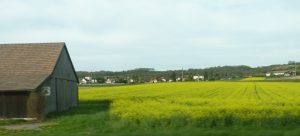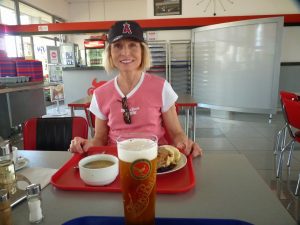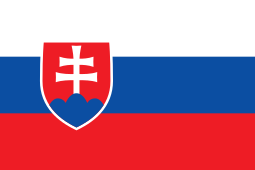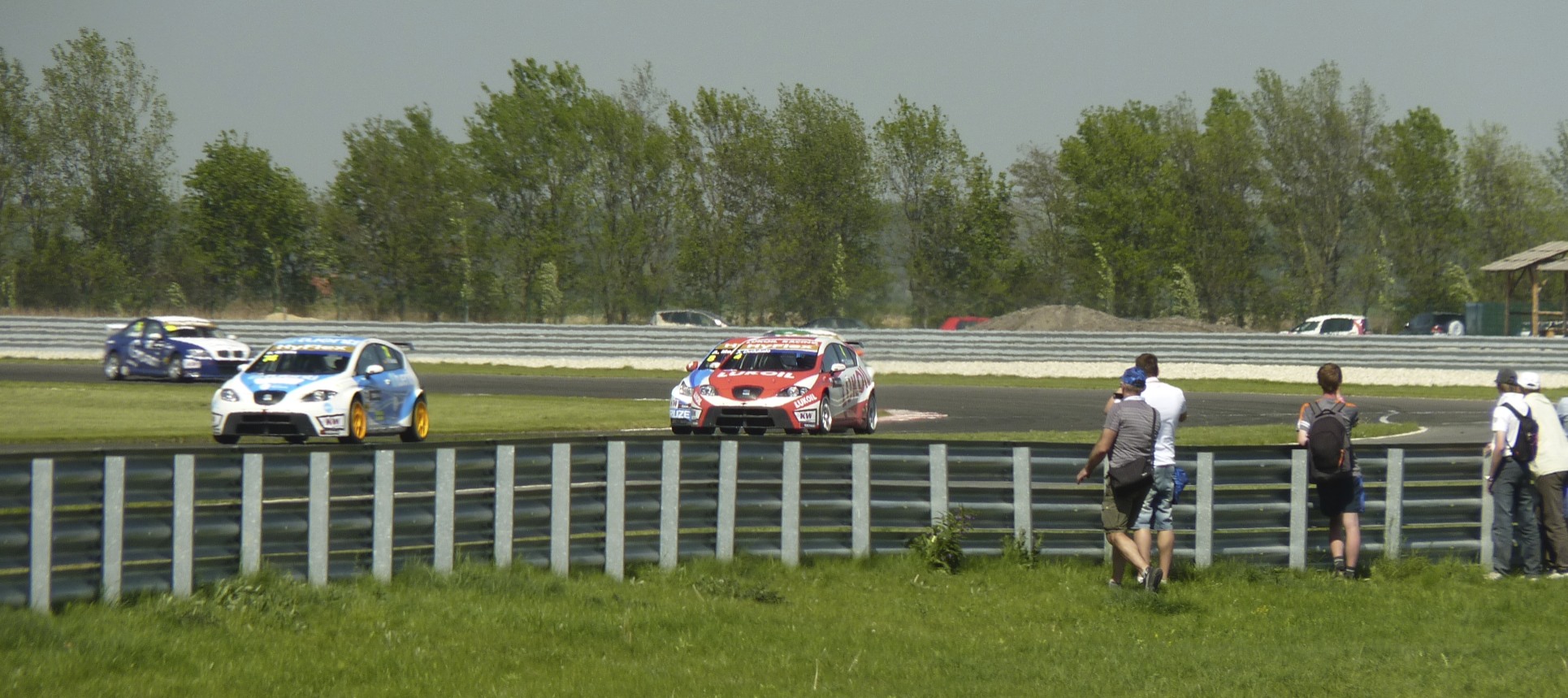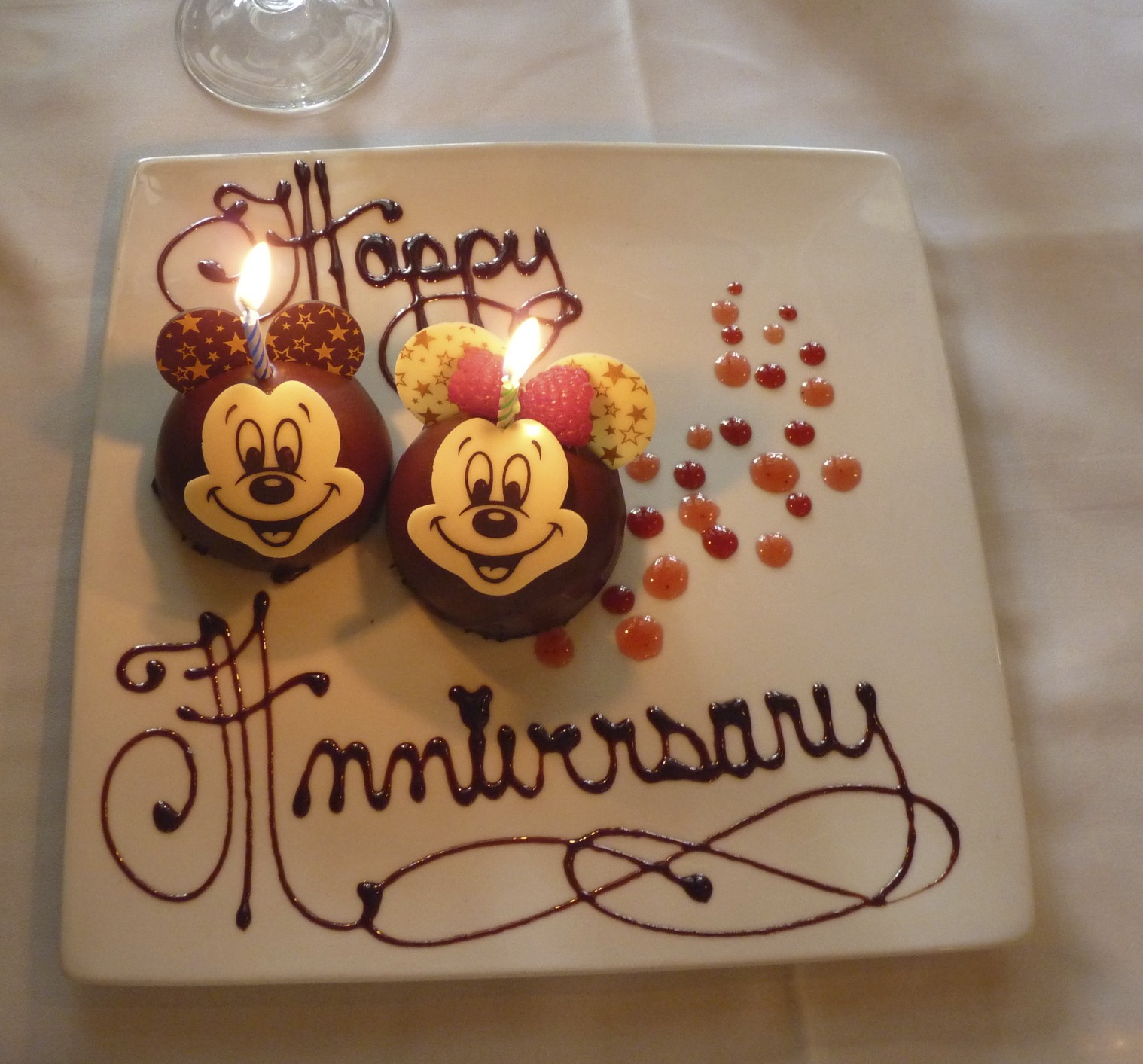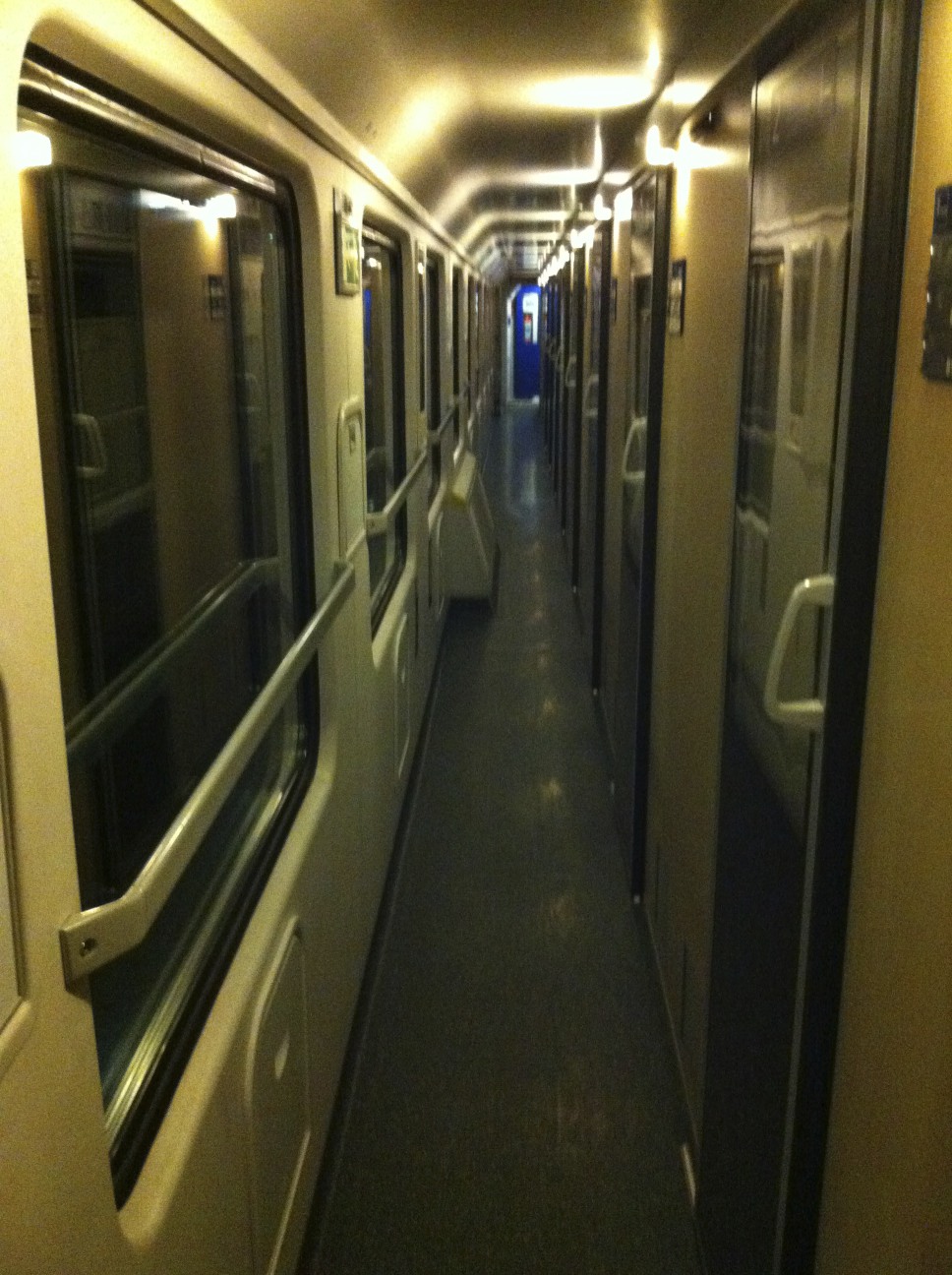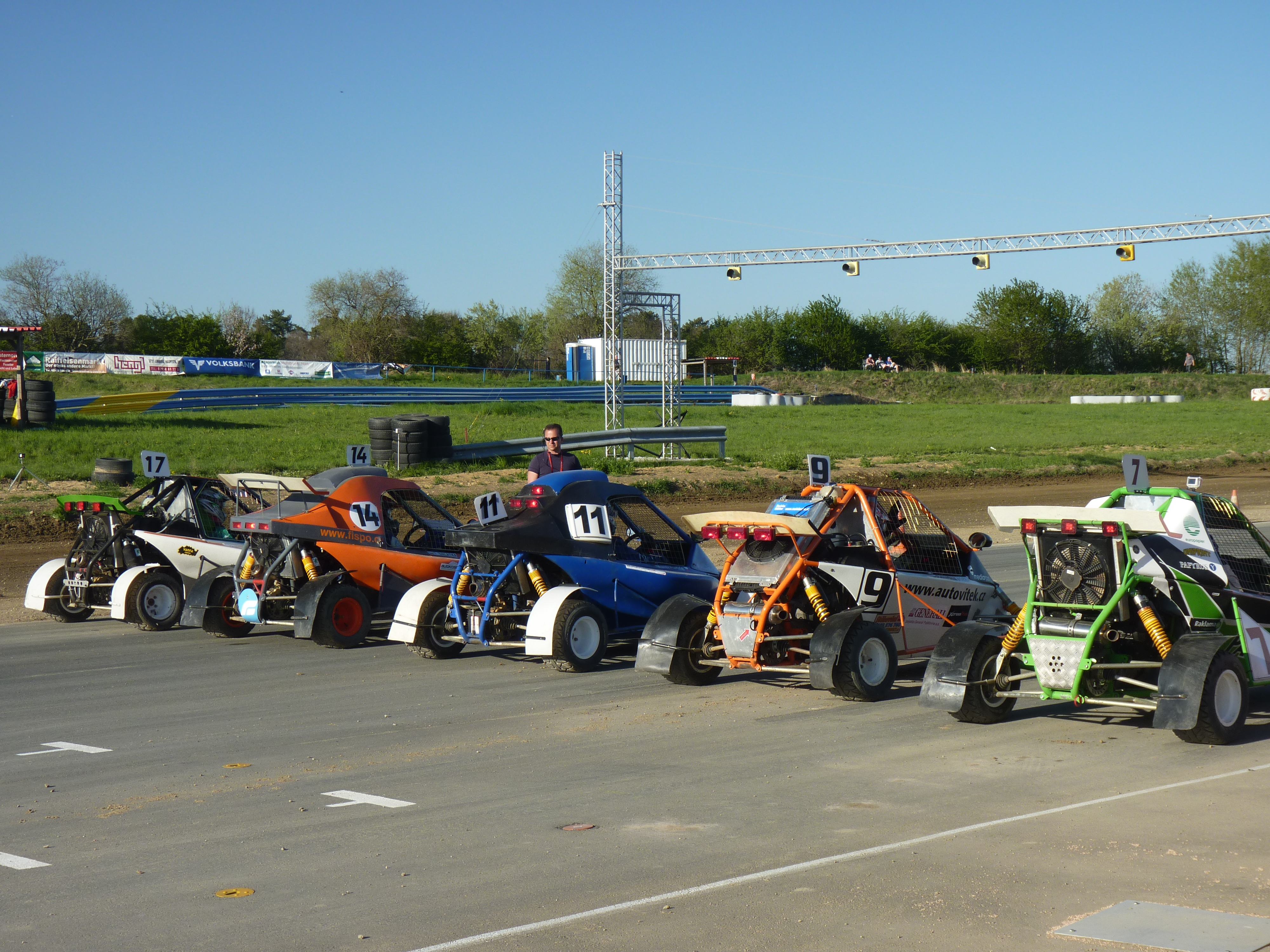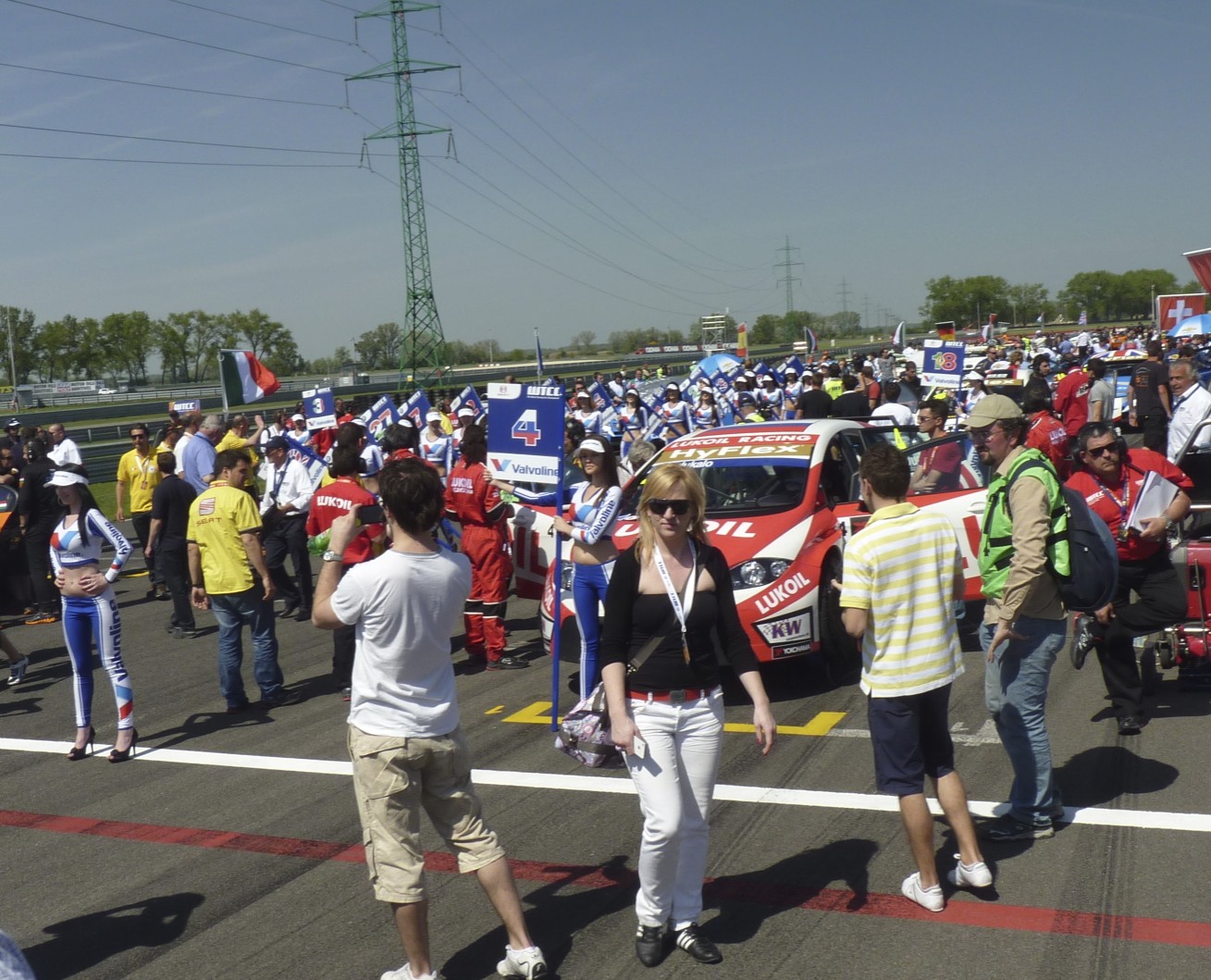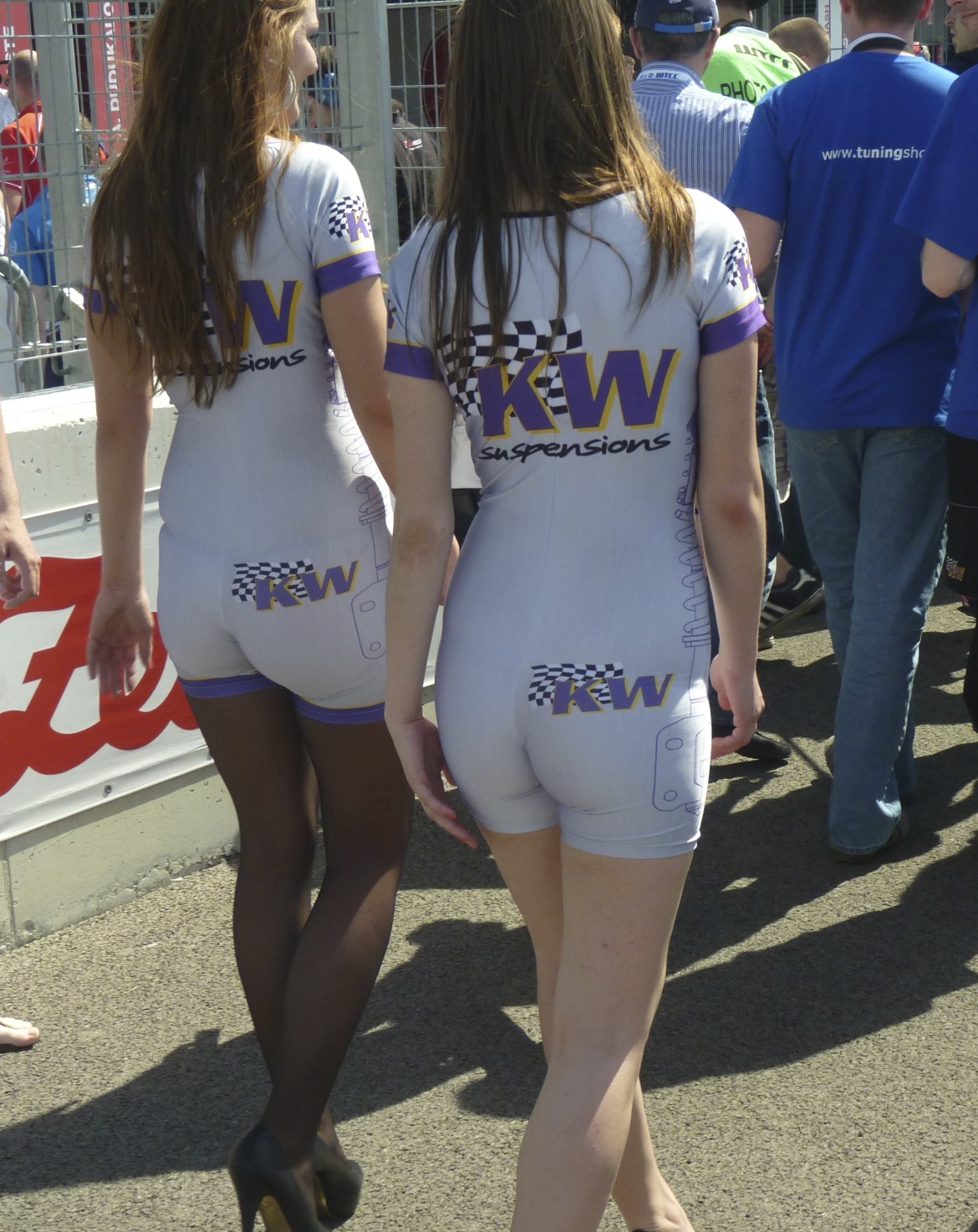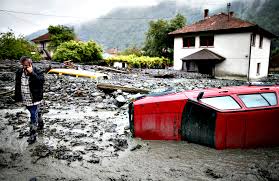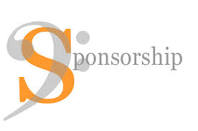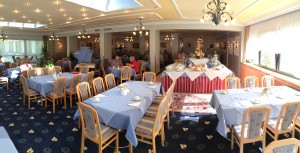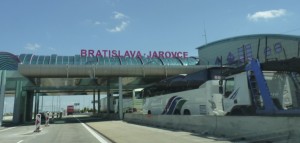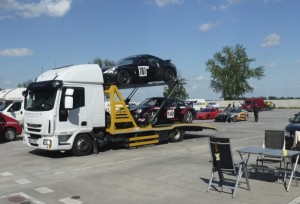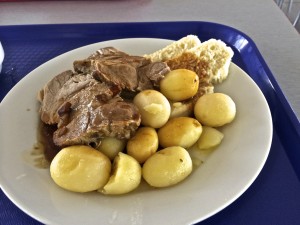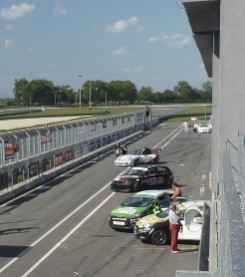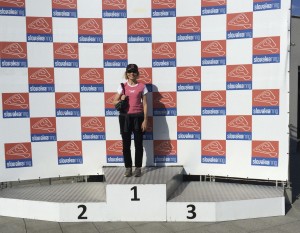Greetings from Orechove Poton, Slovakia
.
.
From the travels and adventures of the “World’s #1 Trackchaser”
.
Country #59 – Track #1,745
Slovakia Ring
Asphalt road course
“Just a long weekend in Europe or…. everybody’s gotta be somewhere” trackchasing tour LIKE TO KNOW MORE ABOUT SLOVAKIA? If you’d like to learn a little more about Slovakia the country check out the “background” information I prepared for you. Simply click on the backgrounds tab. I have condensed this section so you can get a good “feel” for this eastern European continent location. Most of the material comes from Wikipedia. TODAY’S HEADLINES Global Entry and TSA Pre-Check……..details in “The Visa and Thursday – Day 1”. I went to sleep on an overnight train right from Germany to Austria with six other people I didn’t know! Show me the ‘couchette’……..details in “Friday – Day 2 – Frankfurt, Germany” Do they really need to charge you to pee? ……..details in “Friday – Day 2 – Frankfurt, Germany” What if? …..details in “Saturday – Day 3 – Fuglau, Austria”. I could go broke just going to the bathroom in Europe….details in “Saturday – Day 3 – Fuglau, Austria”. I had problems on a few levels ………..details in “Sunday – Day 4 – Orechova Poton, Slovakia” PRE-TRIP ADVANCE PREPARATION You can count on the big boys to show up on time. I was actually planning to come to Slovakia in May for something called the “Carbonia Cup”. However, when the World Touring Car Championship series made an early-season decision to come here I altered my plans. For the most part, the best thing about seeing a major race sanction group in a foreign country is that they will actually hold their race event with no last-minute changes. Confirming this event would be held was one of the easiest foreign country plans I’ve ever made. THE VISA Traveling to Europe is a piece of cake compared to Asia, Africa or South America. Eastern Europe can be a little more challenging but it’s coming along nicely in terms of tourist conveniences. Just to make things even easier, I enrolled and was accepted into the U.S. government’s “Global Entry” program. This makes it simple and fast to clear customs upon returning to the U.S. When I return from Slovakia I will use it for the first time. Yes, those “Dreaded East Coast Trackchasers” are late adapters when it comes to technology and “ease of use” ideas. However, sooner or later they finally break down and buy a used iPhone and/or GPS unit. Things like “Global Entry” allow me to stay ahead of them in the all-important technology/convenience arms race. Everywhere I will be heading in Europe will be in the same time zone. That time zone will be ahead of California by nine hours. However, I will only be overnight for four evenings. That won’t give me much time to get used to the time zone. I’ve read it takes one day for each hour of a time zone change to get acclimated. I’ll be there just long enough to cause some minor inconveniences when I return to our home in San Clemente, California. I didn’t have a lot of help locally with this trip. David, who resides in Slovakia, tried to help. I did send out some emails to the track personnel. They either didn’t understand English or weren’t too impressed that the “World’s #1 Trackchaser” was coming to visit. However, I had a good deal of help from a consistent source, TripAdvisor.com. If you travel anywhere in the world, you’ll do better asking the contributors to TripAdvisor forums “What’s Up?”. Los Angeles to San Francisco to Frankfurt, Germany to Vienna, Austria to Orechova Poton, Slovakia. When this trip to Slovakia is complete I will have seen racing in 59 different countries. What’s the big deal with that? Almost all of them were a heck of a long way from where I live in Southern California. O.K., all let’s be honest. All of them were! It takes a lot of resources (all kinds of resources) to make that happen. Getting to Europe before about May 15 is pretty easy. Did you know that the American Airlines frequent flyer program will let you fly to Europe from October 15 to May 15 each year for 40,000 miles? However, from May 15 to October 15 the charge is 80,000 miles. That might give you some indication about the demand from one season to the next. However, I was not traveling on American Airlines nor was I traveling on a frequent flyer ticket for this trip. CURRENCY Carol came through again. The official currency in Slovakia is the Euro. Right now it takes about $1.32 U.S. to buy a single Euro. I didn’t have to buy any for this trip. A simple request to Carol had her dropping a cellophane bag full of Euros in my inbox on my desk. As the days roll on I truly wonder if she really is a drug dealer. Just right! The weather could have been cold and rainy during this time in Europe. However, it wasn’t. The forecast called for temperatures in the 70s with no rain. Heck, that’s pretty much San Clemente weather every day of the year. It is also the kind of weather I like the very best. A little bit of everything. I would be gone for just four nights. The first night would be spent on an airplane. The second night would be on a train. I was REALLY looking forward to that. The final two evenings would be spent in a lovely little hotel on the outskirts of Vienna, Austria. THE RENTAL CAR Although I would be taking planes and trains I would also need a rental car. I use Kayak.com for my international rental car needs. Their site is clear and clean and easy to figure out. I would be renting from SIXT. We rented a car from those folks in Poland and the experience was great. I rented an economy class car with unlimited kilometers for just 66 Euros for the two days for this trip. The car will have a manual transmission. I like “driving stick” for short durations like this trip will be. The economy class car costs only a euro or two per day over one or two smaller class cars. I can’t tell the difference between a “big” car and a “small” car in Europe. They all look the same to me with the $100,000 U.S. Mercedes and the like excepted. Hopefully, I won’t be hassled by the “Insurance scam” perpetrated by Thrifty Rental Car in Frankfurt the last time Carol and I came passing through. I have learned to print out my MasterCard rental car coverage details for foreign country rentals. NAVIGATION “Garth”, my loyal and reliable GPS buddy, will be riding shotgun with me. Of course, in Europe, Garth is sponsored. The Peters family clan provides me with European GPS support. For the most part Garth works as well in Europe as he does in the U.S. Sometimes Eastern Europe gets a little sketchy so we’ll see how he does in Slovakia. THE TRAVELING COMPANION Carol makes her own decisions. Carol won’t be coming on this trip. Just twelve days ago she came back from an 11-day trip to Maui, Hawaii. A week after I return from this trip she will leave with me for an 8-10 day trip on what could very well be trackchasing country #60 for me and #29 or more for her. I can’t fault her a bit. She does her part. THE SUMMARY I had a firm race date. The weather was going to be great. I also had no major worries on how I would get to my destination. I had absolutely nothing to worry about. That’s what worried me! I put hours and hours into planning these adventures, both foreign and domestic. Nevertheless, only about one in fifty comes off without a hitch. This plan was one of the simpler that I had ever concocted internationally. What could go wrong? Thursday – Day 1 – Los Angeles, California to Frankfurt, Germany via San Francisco, California I lead an active lifestyle. Yesterday, for the first time ever, Carol and I went with our grandbaby twins, Astrid and Mitch to Disneyland. Of course, parents Kristy and James came along as well as son, J.J. Unfortunately, our son Jim, who lives in Hawaii, could not complete the family outing. We have been a “heavy-duty” Disney family for a long time. Of course, as a child growing up in Illinois going to Disneyland was never a reality. However, Carol and I honeymooned at Disneyworld in Florida in 1972 just three months after the park opened. We moved to California in 1974 for four years and then moved back to SoCal in 1983 for good. When you live in a nice place all kinds of friends and family want to visit you. They not only want to visit YOU but they want to visit the local tourist attractions. In Southern California that means Disneyland. For a while we had people visiting every month or two and everyone wanted to go to Disneyland. If I had to guess, we’ve been to Disneyland twenty-five times or more. Son J.J. even worked at Disneyland during his high school and college years. Yesterday we entered the park when it opened at 9 a.m. We left at near closing time. For us, the main attraction was the very same as when we took our kids some thirty years ago. Back then we simply wanted to watch the kids watching Disneyland. Today we wanted to watch our grandbabies watch Disneyland. However, for the “older children” they were watching Carol and me celebrate our 40th wedding anniversary. They had all chipped in to “fund” the day’s outing. We didn’t have to pay for a thing. The “non-people” highlight of the day was a special lunch reservation at Club 33 (Club 33) at Disneyland. Club 33 is a very special place that few people know about. Even fewer people have ever been inside this club/restaurant. It carries a $25,000 club initiation fee and $10,000 annual dues. Even at those rates, there is a 14-year waiting list to become a member! At Club 33, Carol and I relaxed above the fray of the park while getting the best service one could ever expect. We dined on salmon in an old-world atmosphere so different from what anyone could possibly expect from a visit to Disneyland. The menu was specially printed for us commemorating our 40 wedding anniversary. The dessert bar was over the top. I had committed to trying everything because I didn’t know if I would ever make it back to Club 33. Just when I had gorged myself with every dessert imaginable our waiter came calling with a double-barreled chocolate mouse dish, with candles, commemorating even further our wedding anniversary. Don’t miss the pictures. I know that some family and friends reading these reports like to keep up with the growth of the twins. You can see the twins, see Disneyland and even get a rare close-up glimpse of Club 33. Click on this link or go to the “Twins” tab on my website at www.randylewis.org. You’ll get a chance to see how those grandbabies have grown in three years and ten months. Disneyland – 40th anniversary trip and grandbabies first visit We didn’t get home until nearly 10 p.m. from Disneyland. My wakeup call for my trip to Slovakia would come at 3:40 a.m. to begin this adventure. For folks our age, we push the limit, don’t we. I woke up on Thursday morning at 3:37 a.m. three minutes ahead of my alarm. That was a good thing. That meant Carol wouldn’t be disturbed by the alarm. Everything had been packed the night before. I simply needed to shower and to get dressed. Carol normally wakes up when I go about my early morning business but not this morning. I think Disneyland wore her out! Yes, Disneyland can wear a person out. She was still sleeping when I was ready to leave. I contemplated letting her sleep…..just like Sleeping Beauty. However, our tradition has always been for me to give her a kiss and she can wish me a bon voyage before I leave on one of these trips. We maintained that commitment and I bade her farewell. Then I was off on the 65-mile drive to the Los Angeles International Airport. We were experiencing our likely last rain of the “season”. It probably won’t rain again until November. When I arrive at my parking garage at LAX I have two options. I can take a 20-minute walk or ride the hotel shuttle across the street from the parking garage. I normally walk and I did this morning. However just after I started walking it began to rain. Luckily, a parking shuttle driver took pity and picked me up. Good things on him. It was all rainbows in San Franciso. I was taking the first flight of the day to San Francisco. During this time of year, the San Francisco airport (SFO) can get fogged in. Not today! When I landed I was seeing rainbows. I couldn’t chance missing my 2 p.m. flight to Frankfurt, Germany. If there were no delays getting into SFO I would have a nearly six-hour layover in San Francisco. There were no delays and I simply hung out at the airport sorting photos from my most recent trackchasing visits. The highlight of the morning was using the new “TSA Pre-Check” (The wave of the future…for the right people) program. This allows passengers, like me, who have been pre-screened to pass through airport security without removing my shoes, removing my laptop from its case, removing my belt, or taking my “liquids” out of carryon luggage. I simply removed the metal from my pockets, put all of my carry-on stuff (Bose headset, camera, neck pillow and rolling carry-on bag) on the conveyer belt and walked through the metal detector. I am usually well ahead of the technology curve. I am on this too. Someday, but probably not too soon, even those “Dreaded East Coast Trackchasers” will figure this one out…..but it probably won’t be THAT soon. I would fly to Frankfurt, Germany from San Francisco in coach. Coach for a 12-hour flight isn’t that great….but it beats the alternatives. I don’t mind flying coach for any distance. I’m more interested in what will be happening when I land. Friday – Day 2 – Frankfurt, Germany to Vienna, Austria I needed a train to the city centre. This morning I landed in Frankfurt, Germany at 10 a.m. local time. Frankfurt is nine hours ahead of our time zone in Los Angeles. I’ll only be in Europe for three evenings. That won’t be long enough to get used to the time zone. I’ll just fight through it and nap when I can. My final destination on the outbound portion of this trip is Vienna, Austria. Several weeks ago I purchased a one-way ticket for the backend of this trip from Vienna back to Frankfurt. The fare was just $65 U.S. one-way for the flight. That was a steal. I could have purchased the outbound flight from Frankfurt to Vienna for the same price….but I waited. I was trying to get something special set up where I wouldn’t need that flight from FRA-VIE. That never happened and by the time I decided to purchase the Frankfurt-Vienna flight the fare had gone up from $65 to $199 U.S., I didn’t like that idea so it got me to thinking. Why not take the train from Frankfurt to Vienna? I had never done that by myself. Years ago Carol and I rode a train overnight in a sleeper car while touring Russia (Moscow to St. Petersburg). This trip would be special because I would have the chance to use a sleeper car by myself. Anything that I’ve never done I want to do. This was one of those things. More on that later. After a 12-hour flight from SFO, I cleared customs easily in Frankfurt. I had 13 hours to kill until tonight’s train ride to Vienna, Austria. This morning I had to get to the train station in downtown Frankfurt to be in a position to catch the evening train to Vienna. The boys and girls over at TripAdvisor.com had given me their best advice on how to make this happen. They told me to grab a train in terminal 1 of the Frankfurt airport. There, for a small fee of 4.10 euro, I could make the 14-minute ride to the Frankfurt train station in central Frankfurt. It was a fun challenge to see if I could buy my own train ticket via a central kiosk for the train in the airport. I could! I did make the error of first stepping inside a first-class train car. Other passengers corrected my mistake. On that train it certainly didn’t look like buying a first-class train ticket was worth it. Frankfurt’s city centre train station. The Frankfurt train station was huge and somewhat old. TripAdvisor advice told me that I could store my bags in the station’s storage lockers. For three euros (it was five for a larger locker) I could squeeze my stuff into one of the smaller storage lockers. Toting nothing more than my camera the next several hours would be much more comfortable in Frankfurt. By the way, I don’t tell you these stories by memory. I simply look at my pictures to confirm what did and did not take place. That’s why I think if you’re interested in reading this the pictures will put a whole new spin on bridging any “understanding gap” that might exist between what I write and what you the reader understands. Lunch was a “chili” bratwurst at a “Wursthelden” store in the train station. How could I come to Germany and not have a bratwurst? Just as my server had predicted it was hot! It was a beautiful spring day in Frankfurt. The temps were in the high 70s. I grabbed a City Tour Sightseeing “hop on/hop off” sightseeing bus for 15 euros. It was one of those “open-air” double-decker buses you see on the Travel channel. A complete loop around the city took one hour at a price of 12 euros. The higher price I paid allowed me to ride the bus all day if I wanted. I ended up taking three loops around the city. Overall, I was not that much impressed with the architecture or attractions of the city. Nevertheless, on a beautiful day, it was relaxing to see Frankfurt this way. After three times around I was beginning to really get to know the place! For a short time, it was back to the train station. There I met up with one of my pet peeves about Europe. In many places, they charge to use public bathrooms. In the train station, they charged 0.70 euros (about a dollar). I guess the locals are used to it but I’m not. I still had six hours before my train left. I decided to make my own walking tour. This was when I came across the “Occupy Frankfurt” (Yes, they have a link) tent city. I’ve read about these “sit-ins” in the U.S. but this was the first time I had seen one first hand. Don’t miss the pictures. On the way back toward the train station, I stumbled across the “English Theatre of Frankfurt” (The theatre). They were having a theatrical run of the 1988 movie, “Rain Man”. This would be an excellent way to spend my remaining hours in Frankfurt. The timing could not have been more perfect. The play started at 7:30 p.m. and would finish up at 10 p.m. You’ve got to love the preciseness of the Germans. A sign indicated exactly how long act one would be, how long intermission would be, and how long the last act was going to be. The theatre was a 10-minute walk to the train station. Often times the timing doesn’t work out this well when multiple events present themselves. Today it was perfect. My pre-theatre dinner….Indian food. There was just enough time to have a gourmet meal. Traveling to foreign places allows me the opportunity to eat great food at fantastic restaurants. I discovered an Indian restaurant called Spice (Good Indian food) near the train station. They served delightful spicy chicken tikka masala. I’ve grown to be a big Indian food lover. U.S. English speaking actors as the theatre’s name indicated, performed tonight’s play in English. The audience was 100% German as far as I could tell. Despite some of the roughest language I could imagine (I play golf so I know rough language) everyone seemed to enjoy the performance. The German audience puzzled me to some degree. Within each act, there were several scenes where the lights went dark and the set was rearranged. These would have been perfect opportunities for the crowd to applaud the actor’s performances. However, the audience did not applaud a single time until the entire production was finished. Then they kept applauding until the actors had made five curtain calls. Surprising! I was very much looking forward to my overnight train ride. It would rank just behind my staying in a “coffin” hotel (above) in Tokyo. The train ride from Frankfurt, Germany to Vienna, Austria would be about nine hours long covering somewhere around 345 miles. I had fleshed out this idea with the people at TripAdvisor. Google helped too. I bought my ticket online in advance. For just 79 euros I could make the trip. I figured the overall expense of $105 U.S. was a bargain for both a night’s accommodation AND transportation for this distance. I had reserved a sleeping car. However, it was not a private sleeping car. There would be six of us in one compartment. Our section was not that large. Check out this link and some train riding advice provided by reader Louis Skypala to see what a compartment with six “couchettes” looks like. I locked up my stuff. I would make sure that you sleep with any valuables, computers, cameras phones (in general all electronics) as well as money and any jewelry and your passport. When I was in Europe in 2006 using a first-class Eurail pass I always upgraded to a first-class sleeper, It usually cost me an extra $100.00 a night. It was well worth the peace of mind since I did not want anything happening that would force me to change plans or worse yet return home early. Based on what I just read you should be fine especially if you are on a newer train. However, once you get into your couchette check it out. If you’re not sure sleep with your valuables just to be on the safe side. Going from Frankfurt to Vienna should not pose a problem. The only complaint I have ever heard from people who slept in a six-person couchette was that sometimes the younger folks were more interested in staying up all night and making noise which isn’t fun if you’re trying to get some sleep. Other than that it’s all quite harmless. Never once did I ever hear of anyone being robbed. Hope this helps.” This was a cozy place with five (six) of my closest friends. The space was about seven feet square and maybe ten feet in height. There were three bunks that came out of the walls on each side. I soon discovered that my bunk had been pre-assigned. I was lucky enough to get a top bunk. A more experienced traveler told me this was a good idea because “if you’re on the lower bunk people bother you during the night when they go to the toilet”. That made sense to me, especially after I had spent a night on the train. When I entered my compartment the two lower bunks were already occupied by a middle-aged couple. That’s when I first discovered I was in a co-ed car! This couple had gotten on the train at the stop before Frankfurt. And went to sleep with six other people. The middle bunks were occupied by an older single woman who was going to Vienna for the day and returning the next evening. Opposite her was an attractive young woman who shared her bed with her two-year-old son. Then opposite me on the top bunks was a 40ish man who was traveling back to Budapest for a holiday. The next morning we all got to know each other. My space was a little claustrophobic. With my right shoulder on the bed, I could touch the ceiling of our compartment with my left elbow. The space from my mattress to the ceiling might have been 24-30 inches. In the middle of the night, I did have to walk some eight rungs down a metal ladder to visit the toilet (that’s what they call it in Europe). I would not want to be in a small confined place like this if there was a rip roarer of a snorer in the group. Would I do this again? Yes, I would. I would love to have Carol experience a “sleeper” car. Maybe she will. I could have paid ten more euros to have just four bunks in the compartment. I figured there wasn’t much difference between four people in a cabin and six. When I was in Marine Corps boot camp I slept with 18 guys in a “Gomer Pyle” metal Quonset hut for three months. Six folks in a train car for one evening was a piece of cake. Saturday – Day 3 – Fuglau, Austria I was in Europe to see racing in the country of Slovakia, my 59th trackchasing country. The racing in Slovakia would take place on Sunday. That left Saturday open! What if I could find another race “on the Saturday” that was somewhat nearby Sunday’s race in Orechova Poten, Slovakia? That would be somewhat easier said than done. Racing in this part of the world happens much more on Sunday than Saturday. Slovakia is bordered by the Czech Republic, Austria, Poland, Hungary, and Ukraine. Any racing beyond these countries would probably be too far away from Sunday’s racing in Slovakia. Therefore I went about trying to find some Saturday racing in one of the five countries listed above. Folks, this is not like researching a race in Iowa, Illinois and Wisconsin! These people don’t speak much English. Their websites, when they exist, are all written in the foreign (to me) language of their country. Nevertheless, with a few hours of nosing around on the internet and some help from friends in Austria and Slovakia, I found a race. Yes, a track called “Nordring” in the small village of Fuglau, Austria was racing on Saturday. There was something that made this connection extra special. The entire amount of driving from my hotel in Austria to the track in Austria, back to my hotel in Austria, and then to the race in Slovakia and back to the airport……was only FOUR hours. I had hit the jackpot. The springtime weather was spectacular. I was last rained out on June 3, 2011. There would be no rainouts on this trip. The farm fields were a beautiful green and often yellow the color of “rapeseed” fields (What is rapeseed). I can tell you this. My photos of a rapeseed field are never as beautiful as they are in person. Garth got me to the village of Fuglau in Austria in plenty of time. I simply flashed my “World’s #1 Trackchaser” business card and the seas parted at the admission gate. My first stop was at the concession stand. There I consumed a large spicy bratwurst. Then I went about exploring the paddock area. Let’s get ready to race! One of the main advantages of European racing is that the paddock area is open to spectators, normally at no extra charge. This allows fans to get “up close and personal” with the cars and drivers. I like that. In the U.S. they often try to rip off patrons with a pit pass that is 2-3 times the price of a general admission ticket. The “timetable” i.e., race schedule for the weekend called for practice and then “timed practice” for all of Saturday up until 5 p.m. Then they would have “heat 1” for all divisions. On Sunday, when I would be trackchasing in Slovakia there would be racing for heats 2 and 3 at the Nordring. The paddock area was full of three main classes of racecars. There were sedans, dune buggies and cross karts. I would guess there were 75 competitors in the pits maybe more. It seemed as if the nearby Czech Republic had the most racers in the pits. When is gravel considered dirt and tarmac asphalt? The Nordring track itself was a relatively flat road course. The racing surface was a combination of “gravel” i.e., dirt and “tarmac” i.e., asphalt. All of the announcing was done in a foreign tongue. That made finding out exactly where they were in the “timetable” somewhat difficult. That didn’t bother me too much. I could find the concession stand to feed myself. I also found the “toilet” where they wanted 0.30 cents euro for each visit. As an English speaking person, I pleaded “language deficit” (not difficult for me to do) and did my business for no charge. I do get a major kick out of seeing so many places in Europe charging to use the bathroom. They get an equal kick out of seeing that the U.S. doesn’t offer some form of national health care to each of their citizens! I struck up a conversation with the “driver liaison officer” of the track. This fellow’s job was to keep the driver’s happy. Luckily for me, he spoke English and was willing to get me up to speed on the racing program. To my utter delight, he explained they would be racing on two tracks. The first track would be for “rallycross” racing. Rallycross is done on a mixed surface of gravel and tarmac. There would also be autocross racing for the dune buggy type class and cross karts. Except for the starting grid, autocross racing is contested on the gravel/dirt course. Based on the “different surfaces” trackchasing rules this would count as two tracks. Big bucks? I must have arrived at about 2 p.m. I scoured every inch of the paddock area. You won’t want to miss the pictures of the unusual (to me) racecars and haulers. Then I headed out to the track to see the racing activity. For what seemed like forever, they practiced and then they had timed practice. They would bring out 4-5 cars, line them up as if they were going to have a race, and then let one car go at a time for practice and qualifying. Since I couldn’t understand the announcer I didn’t know when, if ever, they were going to have a real race. That was until my English-speaking friend gave me the low down. Wheel to wheel racing was supposed to begin at 5 p.m. he told me. However, like so many of their tardy U.S. counterparts they didn’t really have their act together. The first race, on the rallycross course, started at 7:15 p.m. Sunset was at about 8:30 p.m. The track did have a few lights but probably not enough to cover the entire track. At sundown, they called it a day after running ten or more rallycross races. Now we are racing! The races only included 4-5 cars for a distance of 3-4 laps. It wasn’t exactly like a 100-lapper for 30 dirt late models! Nevertheless, track #1,743 was in the books. I had come to the Nordring expecting to see racing on ONE track. However, once I knew they had TWO tracks I was disappointed in seeing racing on only one. My “driver liaison officer” told me they would be back here bright and early on Sunday morning, at 8 a.m. to resume racing. That would include racing on the autocross course. This presented a minor dilemma for me. The Sunday afternoon racing in Slovakia, my main reason for being here, would not begin until about 2 p.m. I COULD return to Nordring in Austria for the early Sunday morning race but it would add about 125 miles of extra driving. I headed out of the track wondering what I should do. I certainly didn’t want to risk seeing a second track in Austria and then somehow miss seeing the Sunday afternoon race in Slovakia. By the way, I had first come to see racing in Austria back in 2008. Austria was my 18th trackchasing country. I saw some country stock car racing the day after I made my first ever trackchasing visit to the Czech Republic. I frequently return to foreign countries to see racing after I have made an initial trackchasing visit. Here’s a list of places where I’ve done exactly that. United States Canada Australia United Kingdom Belgium France Mexico Austria This was the pepperoni n(ham) pizza. On the way home I stopped at a roadside pizza restaurant. Wearing shorts, like I always do and like most Europeans rarely do I waltzed in and placed my order in English. My pepperoni pizza was really what I would call ham. Nevertheless, it hit the spot and completed my day. Sunday – Day 4 – Orechova Poton, Slovakia Today is the BIG day. In more than 63 years of living, I have only been able to say that, trackchasing wise, 59 times. Yes, Slovakia will be the 59th country where I have trackchased. I have been to another 10-15 countries but they don’t “count” in this analysis. However, my first trackchasing event of the day would not be in Slovakia. I had an early morning appointment to return to Nordring in Fuglau, Austria for their autocross race event. By first going to Austria I was adding some risk to the plan to add country #59 in Slovakia. What if something happened? It could be a flat tire, an accident, or a traffic problem. However, if I worried about all the possible bad things that COULD happen I would be better off staying on the porch back on the block. I arrived at Nordring at 8:15 a.m. after an hour and one-half drive. Again, I was admitted for free as a working member of the press. Soon I saw my English-speaking friend, the track’s “Driver Liaison Officer”. I said hello and his comment was “I thought you were going to Slovakia Ring today!”. I quickly explained that I was back to see the “second” track of Nordring. Yesterday I had seen racing on their rallycross “mixed surface” track of asphalt and gravel. Today I would see racing on the autocross (all gravel) track. In reality “all gravel” really means a dirt surface with a good deal of rocks in the dirt. Frankly, I never would have come up with some of the rules that our trackchasing “Founding Fathers” did or even several of the ones that modern trackchasers have approved. However, I do my very best to trackchase according to those rules. Why? It allows the observer of the hobby to compare the results of one trackchaser and another. As an example, I have now seen 1,745 tracks. No one else, working under the same rules that most trackchasers follow, has come within 300 tracks and climbing of that total. What do you call a track with right AND left turns? Today’s autocross track was a road course. That means it had multiple right and left turns. There were some minor elevation changes. From most spectating positions I could see nearly all of the 1-mile (my guess) track. I stayed for an hour of racing. I saw some six races. The cross kart group started 11 racers. The buggies started just 3-5 competitors. The races were short just four laps each. Races in America are much longer. However, in today’s racing, it seemed that after 3-4 laps the running order had been decided. And now the main event! Then it was off to Slovakia. The estimated driving time would be three hours and 20 minutes. Without much traffic, I expected to arrive by just past noon. That would be great timing. The World Touring Car Championship (WTCC) main events were scheduled for 2:20 p.m. and 3:35 p.m. My GPS mapping works really well in Western Europe. It does less well in Eastern Europe and Slovakia is part of Eastern Europe. Nevertheless, it took me along country roads to within about four miles of the track. Then “Garth,” my friendly GPS buddy told me to travel “Off-Road”. That’s his lingo for “Buddy, it’s been fun but you’re on your own from here”. I was O.K. with that. I had seen a small road sign that said “Automotodrom”. There was no big splashy sign touting “Slovakia Ring” just a little black and white sign with one word, “Automotodrom” printed on it. I took a turn on the main road as directed. This road took me through a small town or two and even a residential neighborhood. Every mile or so there were police encouraging me to keep going. Soon I pulled into the back of a long line of traffic. The road was now two lanes wide with traffic all going in the same direction. There was no room on the road’s shoulder to park. We were out in the country now. There were several problems with my situation at this point. First, the traffic barely moved. Secondly, I could not see the track and had no idea how far “up the road” it might be. My third problem was potentially the most severe. I needed petrol. The infamous “orange fuel light” was now glowing and it seemed to say, “Randy, wouldn’t it have been a good idea to get some gas before you landed in this situation?”. You should know that my ongoing policy is never to get gas until that little orange light comes on. I do it on my trackchasing trips and on my personal driving back in SoCal. I do this for efficiency. I learned it from watching NASCAR. You won’t hear Jeff Gordon radio the pits and say, “I just fell below half a tank. I think I’ll bring her in”. One trackchaser told me he would never do this because he feared it would ruin his fuel pump. Carol has similar concerns. I’ve been “running my tank down” for well over twenty years and never had a maintenance problem. However, back in SoCal, my local gas station limits purchases to $75 U.S. They do this for insurance reasons. They don’t want to be stiffed by folks who don’t pay their bills. I can go inside the station’s office and, as an example, get a charge for $100 U.S. on my credit card. If I only need $80 worth of gas I must go back inside to get my $20 credit. Usually, I’m too lazy to do this entire process. The problem is that $75 worth of premium fuel does not allow me to completely fill the tank of the Carol Lewis owned and Lincoln Financial sponsored Lexus LS430. Times have changed. In high school, I NEVER put more than one dollar U.S. in the tank at a time. I usually didn’t have more than a dollar or so on me. Could I have imagined I would be spending $75 U.S. per gas stop (or more)? Never! I will tell you this. I seriously considered the possibility that this mega traffic jam might prevent me from seeing any racing in Slovakia. I didn’t even want to think about the possibility of running out of gas in the jam. There was no place to pull over to the side of the road. It took nearly an hour to go what I estimated to be three miles. There was still almost an hour before the first main event of the afternoon. It was at this time that I had an ethical dilemma to face. Did I want to straddle trackchasing’s ‘ethical’ line? From where I ended up parking I was a long way from the main entrance to the track. I was near the edge of the massive circuit that led back to the start/finish line. From my position, I could see a “drifting” demonstration going on from outside the track fencing. I figured I could watch the race from here and not have to buy an admission ticket if I wanted. Last year several of our trackchasers attended a street circuit race in Baltimore. Of all the track types street circuits are by far my least favorite. You literally cannot see a thing except what is happening right in front of you. The trackchasers who went to Baltimore (above) elected to stay outside of the track. They paid no admission by doing this. They could probably see as much from a position on a hill outside the track as they could if they had purchased a grandstand seat. I could fully understand their reasoning, I just didn’t agree with it. Yes, they could see some racing. Yes, that was all that was needed to “count” the track under trackchasing rules. However, they missed something that is very important to me…..the ambience of the event. I am not criticizing these trackchasers. However, I would not make the same decision they did. Today, I did not come to Slovakia to stand by a fence OUTSIDE of the track for just a glimpse of the racing action…..and no ambiance. When I bought a ticket I still might not get to see much of the racing. However, I would be like a sponge and soak up the ambiance. Tickets? I found the nearest ticket seller and assessed my choices. I finally settled on a 10 euro “paddock” pass. That price seemed more than reasonable. In road racing, the “paddock” is the pit area to us beer-drinking hot dog eating oval folks. I soon found that, as far as I could tell, the paddock pass ticket option had some limitations. First, there was no place to sit to watch the race. Secondly, there wasn’t a whole lot to see in the paddock area. There were a plethora of sponsor tents serving lavish buffets and free drinks. However, as a retired corporate manager most of my “corporate” tents are in the rearview mirror. There were some thirty race cars in the paddock area from this morning’s support race. That was about it. My option for viewing the racing action wasn’t much better than what I could have seen by staying outside the fence and not buying a ticket. Had I squandered part of my net worth simply to stay above the ethical line? I was looking for ambiance. Where was the ambiance? Of course, the ambience is in the eye of the beholder. Sometimes “ambiance” has to be searched out. I was wearing my pink paddock wrist band. I had seen what the paddock had to offer but I needed more for my ten euro admission fee. I go by the adage that “it’s better to ask for forgiveness than permission”. Other than with the IRS, and sometimes with Carol, that works pretty well for me. The garage area separated the racetrack from the paddock. This was off-limits for my “pay grade” today. However, I could peek in some garages to see the WTCC cars were being gridded for their race. This was my first time in Slovakia. It was time to make my move. What were they going to do? Put me in Slovakian prison? If asked, Carol would likely answer “Yes” to that question. I moseyed on over to one of the garage areas like I knew what I was doing. I learned this in the Marine Corps. I could go anywhere on the base as long as I carried a clipboard, acted like I was going somewhere important and didn’t make eye contact with anyone. I took that “life lesson” with me when I checked out of the corps on September 30, 1977. By the time I reached the garage area most were empty. All of the cars and the people were out on the racetrack. Maybe that was where I needed to be. Why not? Soon I was walking amongst the starting grid of WTCC cars and stars. Every starter had a young woman (don’t miss these pictures!) standing in front of the car with a race flag. I’m in the parade? I had gone from the option of watching the race from outside the fence to getting a somewhat lowly paddock pass to being on the racetrack with all of the V.I.P. pass holders just ten minutes before the race began. The WTCC group is, across the world, very much what NASCAR is in the U.S. Can you imagine pulling this off at Martinsville or Talladega? Did I consider myself lucky to be on the starting grid? Nope. Did I consider that I had learned the right lessons in life and had the balls to implement them at the right time? Yep! Soon even the V.I.P.s were being herded off the starting grid. I found a good viewing area from the paddock area. The first feature race was only going to be ten laps. When you see my racing video it might remind you of watching a basketball game with an obstructed view. So obstructed that you might only be able to see the basketball action near the free throw line at one end of the court. You might not like that if you paid to watch the Lakers play. However, that is what road racing is all about. It is not about being fan-friendly in the least. However, it was what it was. I did get to see one spin. I probably saw the cars racing for 30 seconds or so out of a two-minute lap. There was one special benefit to my viewing location. The tow trucks brought the wrecked cars back to exactly where I was standing. When the race was finished I had the option of staying for another ten-lap “feature” event with the same cars. This race would begin in about an hour. However, there was a problem with that on two fronts. First, I still would not see much of the “racing”. That was the main point. What was the use in staying if there was nothing to see? Secondly, and more importantly, would be the traffic getting out of this place. The two-lane road coming in was also the exit road going out. Slovakia would likely change its country name again before some of these people got off the track property. One more thing…..my “orange low fuel light” was on. I couldn’t risk sitting in traffic for hours with no gas. Following the race and a stop at the track restaurant for a pierre baguette and Coke Zero (reasonably priced at 4.50 euros for everything). I headed for the exit. I followed the few cars that were leaving. I was surprised to see there were still fans ARRIVING and it was now nearly 4 p.m. In less than five minutes I was in the Slovakian countryside. My GPS couldn’t tell me where I was or where I was going. I was nearly out of gas. However, I felt good. This was now officially a “successful” trip. What are YOU looking at? My first stop once I returned to civilization from the track’s remote location was to get some gas. Although I saw prices nearly 10% lower I paid $1.60 euro per liter of fuel in Slovakia. That’s roughly $7.96 per gallon. Folks, we Americans have some of the cheapest fuel in the world even at $4.00 U.S. per gallon. Stop complaining! It was a nice benefit to see that my little Opal Corsa gave me 42 M.P.G. That made my fuel expense even less than back home where I pay about $4.75 per gallon for premium fuel and get only 21-22 M.P.G. Maybe I should stay in America for the low gas prices but buy an Opal! I liked my little Opal except for one thing. The cigarette lighter/power adapter didn’t have enough power to support “Garth” my friendly GPS buddy. About every 1-2 minutes the GPS unit would turn itself off and then reboot. Over a four-hour period that can get annoying! Nevertheless, I worked with what I had and found everything in due time. There was another nice benefit to my SIXT rental car. When I was in stop and go (mainly stopped) traffic trying to get into the track I discovered a fuel-saving option. When I was stopped I would put my transmission in neutral and depress the clutch. When I did that the engine shut off. When I wanted to restart the engine I simply depressed the clutch or stepped on the brake. Very clever. Good on Opal. Dinner was simple tonight. By the time I made the 73-mile drive back to my hotel in Austria I was feeling the effects of my travels. I made the last gas fill-up and purchased my dinner from the gas station convenience store. Going to Europe for a long weekend (Thursday-Monday) is somewhat taxing but something I actually quite enjoy doing. Monday – Day 5 – It’ time to get back to the headquarters of Randy Lewis Racing in San Clemente, California I was up early on Monday morning in Austria. My wake-up call came at 4:30 a.m. (that’s 7:30 p.m. Sunday night in San Clemente!). All I need to do now is get home without incident and this trip will have gone nearly according to plan. I truly do believe that tons of preparation time make for an enjoyable trip while attending to the financial requisites of a responsible retirement strategy. Translated: Have fun but don’t waste money. I had filled my rental car gas tank last evening. I had stuffed my golf windbreaker with dirty clothes and small heavy electrical items. Why? I was trying to beat Air Berlin’s draconian policy of limiting carryon luggage weight to eight kilos (about 17.6 pounds). I came in at 8.5 kilos and the agent let me slide. My “other” baggage probably weighed an additional ten pounds. The drive to the Vienna airport from my hotel was a quick 12 minutes. At the Vienna airport, passengers must get their Air Berlin boarding pass in terminal 1A. Then they leave that building, walk across the street, and clear security in another building. That seemed strange. International security required that I remove my liquids and computer. However, I did not have to take my shoes off. They questioned my “stuffed sleeves” and took a very close look at my GPS base, which is made of lead. Then I was allowed to pass for the quick 385-mile flight to Frankfurt, Germany. I was very pleased with my one-way Vienna-Frankfurt flight on Nikki Airlines. Despite the short distance they still managed to serve a hearty snack and drinks, all complimentary. That’s pretty amazing considering the flight cost only $65 U.S. Other people like to take pictures of food too! Once in Frankfurt, I saw the opportunity to take an earlier flight to Washington, D.C. It didn’t hurt that I was assured of getting a seat in business class. This was a nice reward for the travel sacrifices made earlier in the trip. For the next eight hours and twenty-five minutes of international travel, I was in mimosa land. And so it goes from country #59. I hope you’ll tune in when country #60 becomes a reality. Slovakia was part of a very short visit for me as I began the long trackchasing march through Eastern Europe. Am I finished adding new countries to this year’s total? No. I’m just getting started! I’ve got a lot of “international irons in the fire”. My “fishing” net is being cast wide and far. We’ll just have to see how much cooperation I get from the United States State Department and various foreign governments. As international trackchaser, Will White says, “I would never be surprised to see you show up anywhere in the world”. Of course, his words are loosely translated. Thanks for reading about my trackchasing, Randy Lewis World’s #1 Trackchaser (semi-retired) Life should NOT be a journey to your grave with the intention of arriving with a well-chiseled and honed body but rather to crash in, riding your golf cart up the 18th fairway with a glass of single malt in one hand and a brownie in the other. You should be totally worn out and used up with a tattoo on your chest proclaiming, “What a ride”. RLR – Randy Lewis Racing Lifetime Trackchasing Countries # 1 – UNITED STATES OF AMERICA – Peoria Speedway – Mt. Hawley, (oval) – Track #1, Peoria, Illinois – circa 1954 (age 5) # 2 – CANADA – Cayuga Speedway (oval) – Track #174, Nelles Corner, Ontario, Canada – July 31, 1988 (Dick Trickle winner) # 3 – AUSTRALIA – Parramatta City Raceway (oval) – Track #180, Granville, New South Wales, Australia – November 17, 1989 (accompanied by Carol) # 4 – UNITED KINGDOM – Northhampton International Raceway (oval) – Track #378, Northhampton – June 26, 1999 (accompanied by Carol, Kristy, Jim) # 5 – NETHERLANDS – Driesum Racetrack (oval) – Track #839, Driesum – May 5, 2005 (accompanied by Roland Vanden Eynde) # 6 – BELGIUM – Bellekouter oval (oval) – Track #841, Affligem – May 8, 2005 (accompanied by Roland Vanden Eynde) # 7 – FRANCE – Circuit de Croix en Ternois (road course) – Track #843, Saint-Pol sur-Ternoise – May 8, 2005 (accompanied by Roland Vanden Eynde – 2nd new country in one day!) # 8 – GERMANY – Nurburgring (road course) – Track #844, Nurburg – May 13, 2005 (accompanied by Carol, Roland Vanden Eynde) # 9 – NEW ZEALAND – Western Springs Speedway (oval) – Track #1,134, Western Springs – December 26, 2006 (accompanied by Carol) # 10 – MEXICO – Triovalo Bernardo Obregon (oval) – Track #1,281, Tiajamulco de Zuniga, Jalisco – October 14, 2007 (accompanied by Carol, J.J., Roger Ward) # 11 – BARBADOS – Bushy Park Racing Circuit (road course) – Track #1,296, Bushy Park – December 9, 2007 # 12 – THAILAND – Bira Circuit (road course) – Track #1,300, Pattaya – January 19, 2008 # 13 – SOUTH AFRICA – Durban Grand Prix (road course) – Track #1,315, Durban, KwaZulu-Natal – February 24, 2008 (accompanied by J.J. and Will Van Horne) # 14 – JAMAICA – Dover Raceway (road course) – Track #1,322, Brown’s Town St. Ann – March 24, 2008 # 15 – SWEDEN – Sturup Raceway (road course) – Track #1,335, Malmo – May 10, 2008 (accompanied by Carol) # 16 – DENMARK – Ring Djursland (road course) – Track #1,336, Tirstrup – May 11, 2008 (accompanied by Carol) # 17 – CZECH REPUBLIC – Automotodrome BRNO (road course) – Track #1,381, Brno – September 13, 2008 # 18 – AUSTRIA – Lambrechten Stock Car Track (road course) – Track #1,382, Lambrechten – September 14, 2008 # 19 – IRELAND – Tipperary International Raceway (oval) – Track #1,388, Rosegreen – October 26, 2008 (Carol and I visited this track earlier in the year) # 20 – GUYANA – South Dakota Circuit (road course) – Track #1,390, Timehri – November 2, 2008 (accompanied by Carol) # 21 – CHINA – The Guia Circuit (road course) – Track #1,392, Macau – November 16, 2008 (accompanied by Carol) # 22 – COSTA RICA – Autodromo La Guacima (road course) – Track #1,398, La Guacima – November 30, 2008 # 23 – ANDORRA – Grandvalira Circuit (road course) – Track #1,404, Port d’Envalira, Andorra – January 17, 2009 # 24 – ARGENTINA – Circuito Efren Chemolli (oval) – Track #1,406, Buenos Aires, Argentina – January 31, 2009 (shared with Jerry Fisher) # 25 – QATAR – Losail International Circuit (road course) – Track #1,408, Doha, Qatar – February 13, 2009 # 26 – BAHRAIN – Bahrain International Circuit (road course) – Track #1,410, Sakhir, Bahrain – February 27, 2009 (accompanied by Carol) # 27 – UNITED ARAB EMIRATES – Dubai Autodrome (road course) – Track #1,411, Dubai, United Arab Emirates – February 28, 2009 (accompanied by Carol) # 28 – COLOMBIA – Autodromo de Tocancipa (road course) – Track #1,415, Tocancipa, Colombia – March 22, 2009 # 29 – SPAIN – Motorland Aragon (road course) – Track #1,416, Alcaniz, Spain – March 28, 2009 # 30 – PORTUGAL – Circuto de Murca (road course) – Track #1,417, Murca, Portugal – March 29, 2009 # 31 – ICELAND – Kapelluhraum (road course) – Track #1,420, Hafnafjorour, Iceland – April 25, 2009 (shared with Will White) # 32 – HUNGARY – Hungaroring (road course) – Track #1,426, Mogyorod, Hungary – May 8, 2009 (accompanied by Carol) # 33 – SWITZERLAND – Hock Ybrig (road course) – Track #1,427, Hoch Ybrig, Switzerland – May 9, 2009 (accompanied by Carol) # 34 – ITALY – Vighizzolo d’Este Stock Car Track (road course) – Track #1,428, Vighizzolo d’Este, Italy – May 10, 2009 (accompanied by Carol) # 35 – DOMINICAN REPUBLIC – Autodromo Mobil 1 (road course) – Track #1,515, Santo Domingo, Dominican Republic – December 6, 2009 (accompanied by Carol) # 36 – MALTA – Ta’Qali Race Track (road course) – Track #1,521, Ta’Qali, Malta – February 7, 2010 (accompanied by Carol) # 37 – FINLAND – Lake Pidisjarvi Ice Track (road course) – Track #1,524, Nivala, Finland – February 20, 2010 # 38 – JAPAN – Suzuka Circuit (road course) – Track #1,530, Suzuka, Japan – March 21, 2010 # 39 – CHILE – Autodromo de Interlomas (road course) – Track #1,531, Temuco, Chile – April 18, 2010 # 40 – MOROCCO – Circuit de Marrakesh (road course) – Track #1,535, Marrakesh, Morocco – May 1, 2010 (accompanied by Carol) # 41 – BRAZIL – Circuit de Caruaru – Aryten Senna (road course) – Track #1,540, Caruaru, Brazil – May 16, 2010 (accompanied by Carol, Jerry Fisher and Katina Spencer) # 42 – ESTONIA – Laitse Rally Park (road course) – Track #1,571, Laitse, Estonia – July 24, 2010 (accompanied by Carol) # 43 – LATVIA – Bikernieki (road course) – Track #1,572, Riga, Latvia – July 25, 2010 (accompanied by Carol # 44 – GUATEMALA – Autodromo Pedro Cofino (road course) – Track #1,580, Alotenango, Guatemala – August 15, 2010 # 45 – EL SALVADOR – El Jabali (road course) – Track #1,582, Quezaltepeque, El Salvador – August 22, 2010 (accompanied by Carol) # 46 – ROMANIA – Bradu (road course) – Track #1,603, Bradu, Romania, El Salvador – October 16, 2010 # 47 – BULGARIA – Closed Route – Burgas (road course) – Track #1,604, Burgas, Bulgaria – October 17, 2010 (accompanied by Lyubomir and Plamen Simeonov) # 48 – SOUTH KOREA – Korea International Circuit (road course) – Track #1,605, Yeongam, Jeollanam-Do, South Korea – October 24, 2010 # 49 – PHILIPPINES – Batangas Racing Circuit (road course) – Track #1,608, Batangas, Philippines – November 21, 2010 # 50 – NORWAY – Lyngas Motorbane (road course) – Track #1,648, Lier, Norway – April 30, 2011 # 51 – MALAYSIA – Sepang International Circuit (road course) – Track #1,656, Sepang, Malaysia – May 28, 2011 # 52 – INDONESIA – Sentul International Circuit (road course) – Track #1,657, Babakan Madang, Boder, Indonesia – May 29, 2011 #53 – LUXEMBOURG – Alzingen (road course) – Track #1,711, Alzingen, Luxembourg – September 4, 2011 (accompanied by Carol) # 54 – POLAND – Tor Slomczyn (road course) – Track #1,713, Slomczyn, Poland – September 11, 2011 (accompanied by Carol) # 55 – SINGAPORE – Marina Bay (road course) – Track #1,714, Singapore, Singapore – September 24, 2011 (accompanied by Carol) # 56 – URUGUAY – Piriapolis Grand Prix (road course) – Track #1,724, Piriapolis, Uruguay – November 12, 2011 # 57 – SRI LANKA – Pannala Race Track (road course) – Track #1,732, Pannala, Sri Lanka – February 12, 2012 # 58 – ECUADOR – Autodromo Internacional de Yahuarcocha (road course) – Track #1,736, Ibarra, Ecuador – March 11, 2012 # 59 – SLOVAKIA – Slovakia Ring (road course) – Track #1,742, Orechova Puton, Slovakia – April 29, 2012 The ‘International Big 5’ standings. During the last 54 months, I have added 50 trackchasing countries to my list. That’s an average of nearly one new country every month for going on five years. 1. Randy Lewis, San Clemente, California USA – 59 I hope to have a good year of international trackchasing. I started the year having seen racing in 56 different countries. Slovakia becomes country #3 for 2012. I figure I might as well see as many new countries as I can while I have the resources and good health. 2012 Country List Sri Lanka Ecuador Slovakia Slovakia – FAST FACTS* The Slovak Republic is a landlocked state in Central Europe. Slovakia is bordered by the Czech Republic and Austria to the west, Poland to the north, Ukraine to the east and Hungary to the south. The largest city is the capital, Bratislava. The official language is Slovak, a member of the Slavic language family. HISTORY In 1918, Slovakia and the regions of Bohemia, Moravia, Silesia and Carpathian Ruthenia formed a common state, Czechoslovakia. Between the world wars Czechoslovakia came under continuous pressure from the revisionist governments of Germany and Hungary. Eventually this led to the Munich Agreement of September 1938, which allowed Nazi Germany to partially dismember the country by occupying what was called the Sudetenland, a region with a German-speaking majority and bordering Germany and Austria. The remainder of “rump” Czechoslovakia was renamed Czecho-Slovakia. During World War II most Jews were deported from the country and taken to German labour camps. Thousands of Jews, however, remained to labor in Slovak work camps. Leader Jozef Tiso, through the granting of presidential exceptions, has been credited with saving as many as 40,000 Jews during the war, although other estimates place the figure closer to 4,000 or even 1,000. Nevertheless, under Tiso’s government, 83% of Slovakia’s Jewish population, a total of 75,000 individuals, were murdered, though new estimates show increasing numbers of Jewish casualties, approximately 105,000 people. Tiso became the only European leader to actually pay Nazi authorities to deport his country’s Jews. RULE OF THE COMMUNIST PARTY After World War II, Czechoslovakia was reconstituted and Jozef Tiso was hanged in 1947 for collaboration with the Nazis. More than 80,000 Hungarians and 32,000 Germans were forced to leave Slovakia, in a series of population transfers initiated by the Allies at the Potsdam Conference. Czechoslovakia came under the influence of the Soviet Union and its Warsaw Pact after a coup in 1948. The country was occupied by the Warsaw Pact forces (with the exception of Romania) in 1968, ending a period of liberalization under the leadership of Alexander Dubček. In 1969, Czechoslovakia became a federation of the Czech Socialist Republic and the Slovak Socialist Republic. ESTABLISHMENT OF THE SLAVIC REPUBLIC The end of Communist rule in Czechoslovakia in 1989, during the peaceful Velvet Revolution, was followed once again by the country’s dissolution, this time into two successor states. In July 1992 Slovakia, led by Prime Minister Vladimír Mečiar, declared itself a sovereign state, meaning that its laws took precedence over those of the federal government. Throughout the autumn of 1992, Mečiar and Czech Prime Minister Václav Klaus negotiated the details for disbanding the federation. In November the federal parliament voted to dissolve the country officially on 31 December 1992. The Slovak Republic and the Czech Republic went their separate ways after 1 January 1993, an event sometimes called the Velvet Divorce. Slovakia has remained a close partner with the Czech Republic. Both countries cooperate with Hungary and Poland in the Visegrád Group. Slovakia became a member of NATO on 29 March 2004 and of the European Union on 1 May 2004. On 1 January 2009, Slovakia adopted the Euro as its national currency. POLITICS Slovakia is a parliamentary democratic republic with a multi-party system. The last parliamentary elections were held on 12 June 2010 and two rounds of presidential elections took place on 21 March 2009 and 4 April 2009. The Slovak head of state is the president (currently Ivan Gašparovič), elected by direct popular vote for a five-year term. Most executive power lies with the head of government, the prime minister (currently Iveta Radičová), who is usually the leader of the winning party, but he/she needs to form a majority coalition in the parliament. The prime minister is appointed by the president. The remainder of the cabinet is appointed by the president on the recommendation of the prime minister. The president is the head of state and the formal head of the executive, though with very limited powers. The president is elected by direct, popular vote, under the two round system, for a five-year term. HUMAN RIGHTS The U.S. State Department in 2010 reported: “The government generally respected the human rights of its citizens; however, there were problems in some areas. Notable human rights problems included some continuing reports of police mistreatment of Romani suspects and lengthy pretrial detention; restrictions on freedom of religion; concerns about the integrity of the judiciary, corruption in national government, local government, and government health services; violence against women and children; trafficking in women and children; and societal discrimination and violence against Roma and other minorities.” ECONOMY The Slovak economy is considered an advanced economy, with the country dubbed the “Tatra Tiger“. Slovakia transformed from a centrally planned economy to a market-driven economy. Major privatizations are nearly complete, the banking sector is almost completely in private hands, and foreign investment has risen. Slovakia has recently been characterized by sustained high economic growth. In 2006, Slovakia achieved the highest growth of GDP (8.9%) among the members of the OECD. The annual GDP growth in 2007 is estimated at 10% with a record level of 14% reached in the fourth quarter. According to Eurostat data, Slovak PPS GDP per capita stood at 72 percent of the EU average in 2008. Unemployment, peaking at 19.2% at the end of 1999, decreased to 7.51% in October 2008 according to the Statistical Office of the Slovak Republic. Inflation dropped from an average annual rate of 12.0% in 2000 to just 3.3% in 2002, the election year, but it rose again in 2003–2004 because of rising labor costs and excess taxes. It reached 3.7% in 2005. Slovakia adopted the Euro currency on 1 January 2009 as the 16th member of the Eurozone. The Slovak koruna was revalued on 28 May 2008 to 30.126 for 1 euro, which was also the exchange rate for the euro. INDUSTRY The main industry sectors are car manufacturing and electrical engineering. Since 2007, Slovakia has been the world’s largest producer of cars per capita, with a total of 571,071 cars manufactured in the country in 2007 alone. There are currently three automobile assembly plants: Volkswagen‘s in Bratislava, PSA Peugeot Citroen‘s in Trnava and Kia Motors‘ Žilina Plant. TOURISM Slovakia features natural landscapes, mountains, caves, medieval castles and towns, folk architecture, spas and ski resorts. More than 1.6 million people visited Slovakia in 2006, and the most attractive destinations are the capital of Bratislava and the High Tatras. Most visitors come from the Czech Republic (about 26%), Poland (15%) and Germany (11%). Typical souvenirs from Slovakia are dolls dressed in folk costumes, ceramic objects, crystal glass, carved wooden figures, črpáks (wooden pitchers), fujaras (a folk instrument on the UNESCO list) and valaškas (a decorated folk hatchet) and above all products made from corn husks and wire, notably human figures. DEMOGRAPHICS The majority of the inhabitants of Slovakia are ethnically Slovak (85.8%). Hungarians are the largest ethnic minority (9.5%). Before World War II, 135,000 Jews lived in Slovakia. In 2007 Slovakia was estimated to have a total fertility rate of 1.33. (i.e., the average woman will have 1.33 children in her lifetime), which is significantly below the replacement level and is one of the lowest rates among EU countries. LANGUAGES The official language is Slovak, a member of the Slavic language family. Hungarian is widely spoken in the southern regions and Rusyn is used in some parts of the Northeast. Minority languages hold co-official status in the municipalities in which the size of the minority population meets the legal threshold of 20% RELIGION The Slovak constitution guarantees freedom of religion. 60.4% of Slovaks identify themselves as Roman Catholics, 9.6% as nonreligious or atheist, 6% as Protestant, 4.1% as Greek Catholic and 0.9% as Orthodox; 19% chose “other” to identify themselves. Generally about one third of church members regularly attend church services. The pre–World War II population of the country included an estimated 90,000 Jews (1.6% of the population). After the genocidal policies of the Nazi era, only about 2,300 Jews remain today (0.04% of the population). CUISINE Pork, beef and poultry are the main meats consumed in Slovakia, with pork being substantially the most popular. Chicken is the most widely eaten poultry, followed by duck, goose, and turkey. A blood sausage called jaternice, made from any and all parts of a butchered pig, also has a following. Game, especially boar, rabbit, and venison, are generally available throughout the year. Wine is enjoyed throughout Slovakia. Slovak wine comes predominantly from the southern areas along the Danube and its tributaries; the northern half of the country is too cold and mountainous to grow grapevines. Traditionally, white wine was more popular than red or rosé (except in some regions), and sweet wine more popular than dry, but in recent years tastes seem to be changing. Beer (mainly of the pilsener style, though dark lagers are also consumed) is also popular throughout the country. Europe – 2014 Greetings from all over Europe Why this plan? All planning for these trips is done at the world headquarters of Randy Lewis Racing in San Clemente, California. None of the work is “farmed out”. However, I had hundreds of freelance supporters located all over the world. They help shape my plans. This 20-day trip to Europe was not the ORIGINAL plan. The original plan called for us to visit Ukraine as the site of my 69th trackchasing country. However, when Ukraine got crossways with Russia we decided now might not be a good time to visit Ukraine! Next up the Randy Lewis Racing research and travel department came up with the idea to see TWO new racing countries during one long European trip. It was determined that Serbia and Bosnia and Herzegovina would be trackchasing countries #69 and #70 respectively. The plan was set. We bought our airline tickets and were ready to go. Then, before we left on the trip, the Serbian race had some problems with the local government. That pushed back their race a few weeks. With non-refundable airline tickets, our ship would sink or swim with Bosnia and Herzegovina (of course that’s ONE country) as trackchasing country #69. However, before and during the time we left for this trip, it began to rain in Bosnia and Herzegovina. The rains came and then they came some more. Then the floods came to Bosnia. The flooding was the worst in the history of the country! Our 20-day trip which would span three weekends was supposed to include Serbia on weekend #1, then a couple of tracks in Austria on weekend #2 followed by a race in Bosnia and Herzegovina on weekend #3. After we arrived in Europe we learned that Bosnia would not race because of the severe flooding. I had expected that after hearing the extent to the problem. Now I had a 20-day European trackchasing trip with exactly TWO tracks on the agenda. That would not do. I rang up the RLR research department back in the states and pleaded for help. As per normal these folks did not disappoint. To be perfectly clear I had people, who will be identified during these reports, from all over Europe that were pitching in to help with information, support and direction on what tracks could be added on short notice to our itinerary. Not it’s time to ride along with Randy Lewis Racing and enjoy the sights and sounds of our travails all over much of Europe. It was a fun trip that had all kinds of twists, turns and just unusual stuff. No problem with that. We expect it! That’s exactly what makes these trips so much fun. The entire trip will be broken up into six parts: Part 1 – Trackchasing in Italy Part 2 – A visit to Slovakia for Carol’s 36th trackchasing country Part 3 – Trackchasing in Austria Part 4 – A return outing to the Netherlands for autocross racing Part 5 – A venture into Germany for stock car racing Part 6 – One more visit to my “New England” the Netherlands for autocross racing Before I go any further I need to thank my sponsors and vendors. Without them, I couldn’t do what I do. Here’s a list of my travel partners that made this trip a smashing success. Airfare – Kayak.com Hotels – Booking.com, Hotels.com, Interval International International Rental Cars – Gemut.com (Portland, OR) GPS – iPhone, Garmin, Avis Car Rental Race planning – I have a series of support staff located all over Europe. The lead staffer for this trip was Boris Miljevic from Bosnia and Herzegovina. However, contacts in Italy, Serbia, Netherlands, Belgium, Austria, Germany, Hungary, Slovakia and the Czech Republic were critically important to the planning of this trip as well. It’s important to note that all final decisions on where to go and how to get there are done by just one person…me. This is in contrast to some trackchasers who “phone it in” when they visit non-English speaking countries. They pretty much say, as an example, “I’ll be there from July 10-20. Pick me up at the airport, drive me around to the tracks and drop me off at the airport.” An effort like that knocks out about 80% of the fun on an adventure like this. Of course, that view is simply my opinion. Not all folks idea of adventure and creativity is the same. Day 5/20 – Monday, May 19 Today’s Racing Activity Automotodrom Slovakia Ring, Orechova Poton, Slovakia We woke up in the Alpenland Sport Hotel in St. Johann im Pongau, Austria. We’ll stay here tonight as well. This is what the day looked like. Breakfast at our hotel reminded me of eating on a cruise ship. The dining room was gorgeous. We had purchased the “breakfast plan” for seven mornings. For 95 euros each of us could eat all we wanted for every morning we would stay at the Alpenland Sport Hotel. That comes to about $18.50 per person per breakfast. No this was not like eating off the dollar menu at McDonald’s. The breakfast buffet was not the best. I felt this was one of the poorer values of the trip. It was convenient and it was beautiful. It was just overpriced and not that tasty. Time to go racing…. I was most surprised to find a European race, in Slovakia, taking place on a non-holiday Monday. I had seen racing at the Automotodróm Slovakia Ring in 2012. I am such a “racing fan” that I had to drive ten hours round-trip to see racing there again. O.K., who am I kidding? I did not go back to the track in Slovakia because I am a “racing fan”. I went there because Carol was with me and SHE had never seen a race in that country. Once she had notched Slovakia she will have seen racing in 36 different countries. I must admit that it does gall me to see some trackchasers acting as if they are true racing fans when their real motivation to attend a track is so their spouse or friend can add the track. As Rodney King could of and should have said, “Can’t we all just be honest”? I gave Carol the choice of making the 602-mile round-trip drive to Slovakia or not (with me driving her of course). I was secretly hoping she would veto the idea. However, she said, “We’re here. We might as well go”. So we went. This comes from Wikipedia about today’s track: “Automotodróm Slovakia Ring is a motor racing circuit in Orechová Potôň, Dunajská Streda District in Slovakia, approximately 30 km away from Bratislava Airport. It was built between 2008 and 2009.” The only countable race of the day would be the six-hour endurance race, “The Carbonia Cup”. It was scheduled to begin at 4 p.m. That meant we didn’t need to get up too early to make it to the show on time. Having been there before helped with the idea of finding the place. As we approached Slovakiaring a few things were concerning. There were very few people at the track. Recall I had seen a World Touring Cup Championship race here in 2012. Then the place was packed. Additionally, we saw a few race cars and haulers leaving the track. Others cars were already loaded up. That was most concerning. Had I translated things wrong? Could we have driven 300 miles down to Slovakia only to arrive too late? Soon I cornered a driver. He spoke enough English to tell me the race we had come to see was still happening. Whew! We wandered about before heading to the track restaurant for a “white” lunch. This is Eastern Europe. Carol’s ancestors are from Czechoslovakia. They like “white food” as in pork, dumplings, potatoes and the like. That’s exactly what the restaurant’s buffet was serving for lunch. Carol wore a smile with this news. I must admit to having somewhat of a frown. However, a frown is just a smile turned upside down right? The lunch wasn’t all that bad. The 4 p.m. started didn’t pull off the grid until about 4:30 p.m. At the driver’s meeting, it was decided to shorten the endurance race from six hours to three hours. That didn’t matter much to me. I didn’t plan on being around for either of those checkered flags. About eleven cars took the green flag. That’s not much on a large but mostly flat asphalt road course. We watched for longer than most people would have. Then it was back in the car for a five-hour ride home. By the way, when we entered Slovakia, just as when we entered Austria for the first time we bought a “Vignette” or highway sticker. This would allow us to legally drive on the country’s highways. On a previous trip, I got a ticket for about $175 U.S. for not having such a sticker in Austria. That policeman’s credit card machine WAS working. I was not allowed to leave the scene until I paid my fine. Although I think anyone who eats at McDonald’s while in Europe is either cheap, not very creative, or without culinary acumen we DID stop at a Mickey Ds at about 11 p.m. on the way home to Austria. We dined on caramel sundaes and surveyed the day’s activities. Today had been a successful day of trackchasing for Carol. I was glad to be a support partner on this trip. She’s up to 36 trackchasing countries and nearly 80 overall countries in her lifetime. Not bad huh? 2012
2012 2014 2012 – Slovakia here I come! . . A surprise racing visit to Austria along the way Nordring – Racing and scenery from Austria . . 2014 – Back to Slovakia! Official end of the RLR – Randy Lewis Racing Trackchaser Report
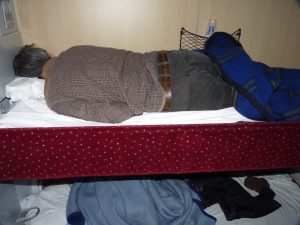
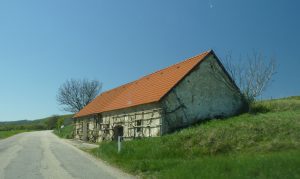
THE RACE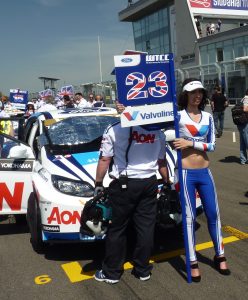
This is getting pretty easy by now.
They won’t ever catch up.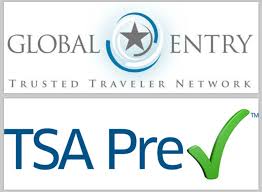
TIME ZONES
What time is it?
BOOTS ON THE GROUND
I can always count on TripAdvisor.
THE TRANSPORTATION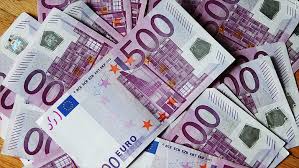
Naw, it couldn’t be true.
WEATHER
OVERNIGHT ACCOMMODATIONS
When is there no difference between little and big?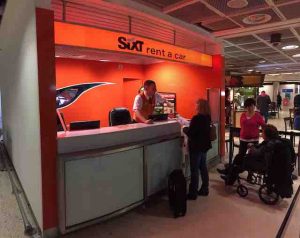
I’m back with my buddy Garth.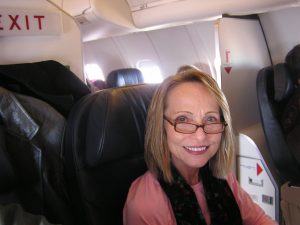
I had nothing to worry about….that’s what worried me.
Up and at ‘em, I’m on my way.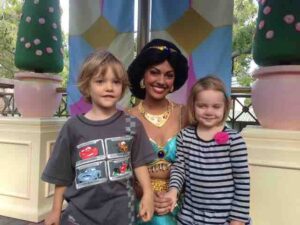
Do you know any ‘Disney’ families?
Club 33….we finally made it.
I couldn’t let Carol sleep through my bon voyage.
It’s nice to see people doing the right thing.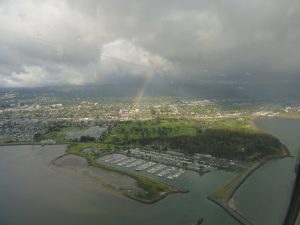
My latest efficiency activity.
Ingenuity is the mother of invention.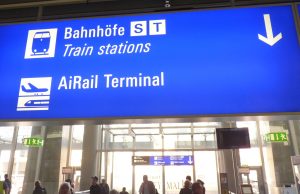
Was there a place I could store my bags?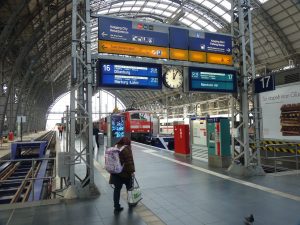
Lunch like the locals.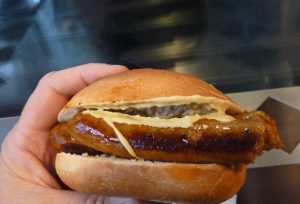
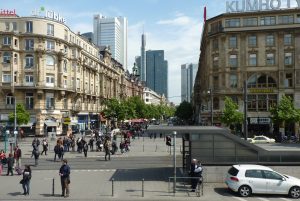
Come on….is this really necessary?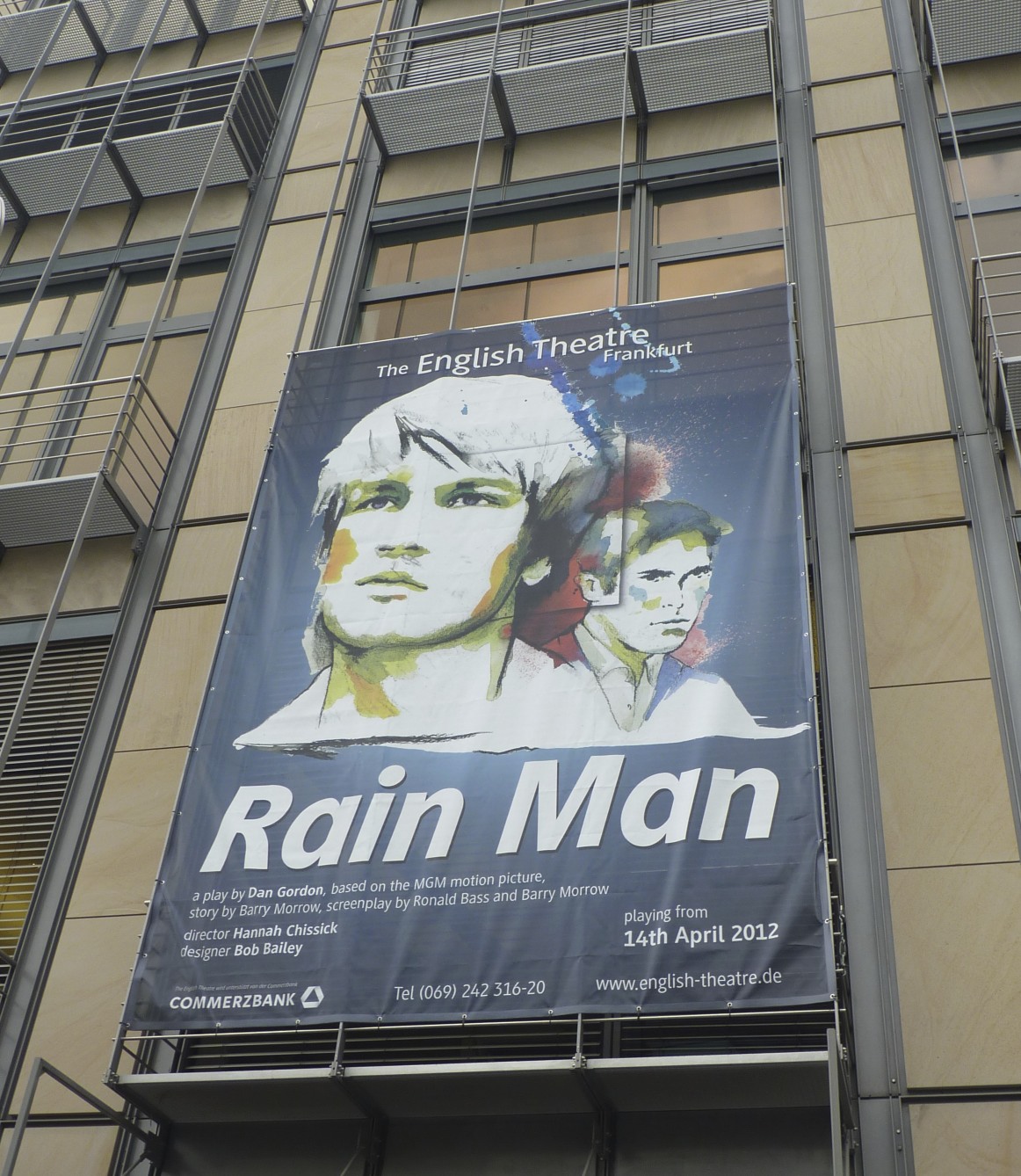
The right time and the right place.
Gourmet dining is a big part of this.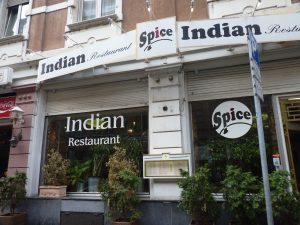
Puzzling?
This was going to be fun.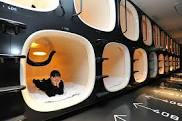
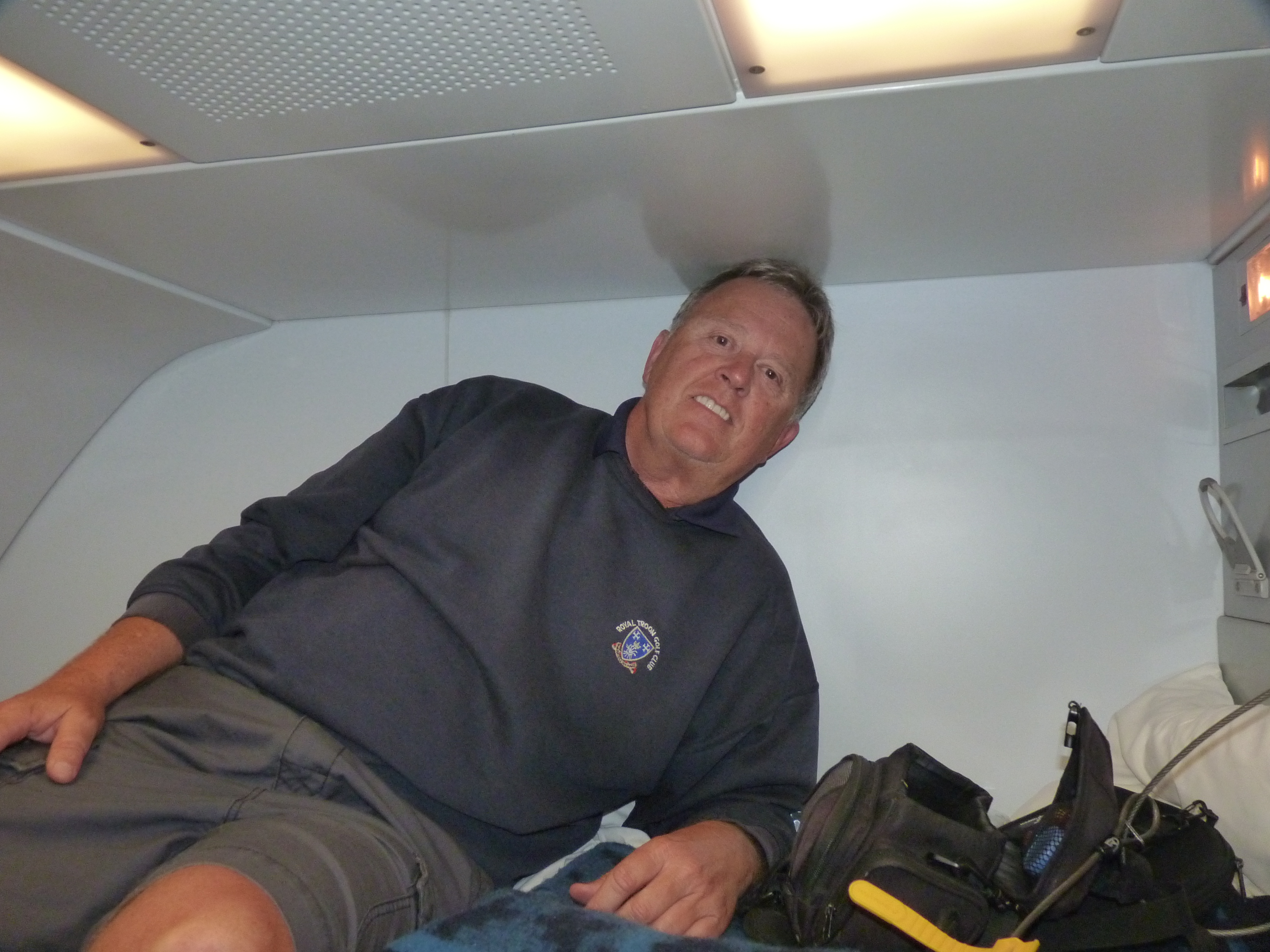
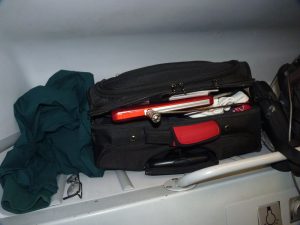

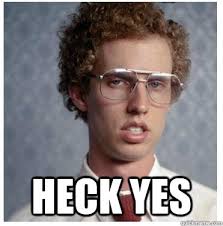
Let’s do this again.
What if?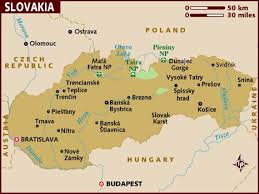
I wasn’t in Kansas anymore.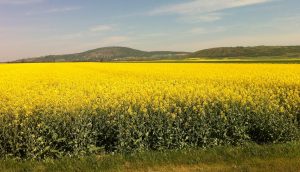
No rain for nearly a year!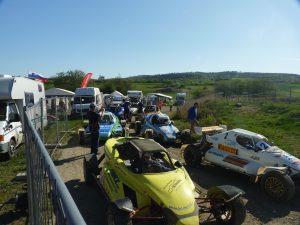
One of the advantages of European racing.
What did the timetable say?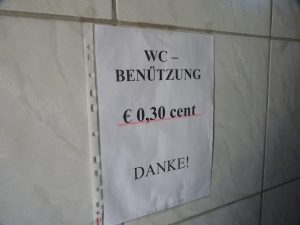
I wouldn’t starve but I could go broke just taking care of my bodily functions.
What is a ‘driver liaison officer’?
He was kidding, right?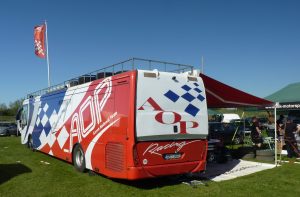
No, now I KNEW I wasn’t in Kansas anymore.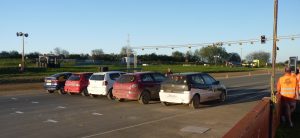
Expectations can be a difficult thing to handle in life.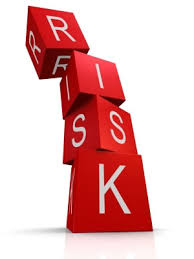
How much risk was I willing to take?
This was not my first Austrian rodeo.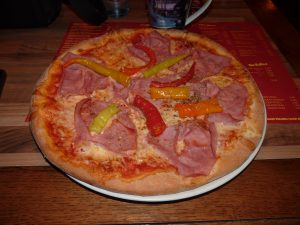
On country #59 day, I didn’t start trackchasing in Slovakia, I started in Austria!
“I thought you were going to Slovakia Ring,” you might have said.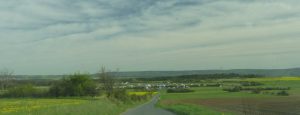
I didn’t write the rules, I don’t agree with a lot of the rules. Nevertheless, I play by all of them.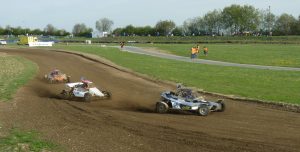
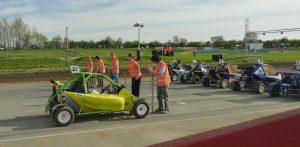

You’re on your own now.
I had problems on a few levels.
I never like being limited in life by the shortcomings of others.
Things did not look good.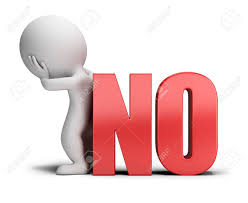
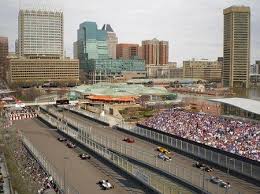
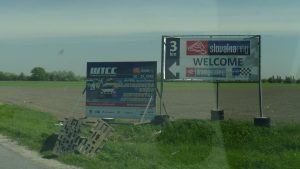
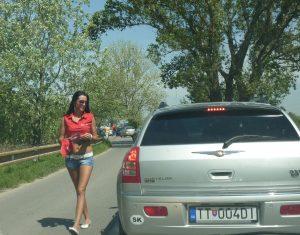
One ticket, please.
My ticket had some ‘power’ limitations.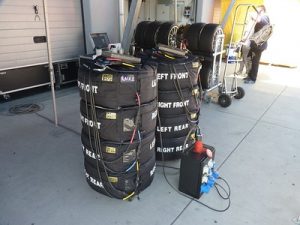
So what could they really do to me?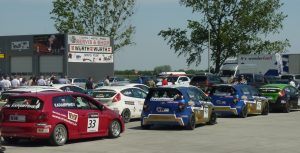
Was I meant to be on the starting grid from the very start?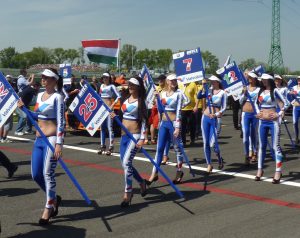

I ‘saw’ the race but there wasn’t much to ‘see’.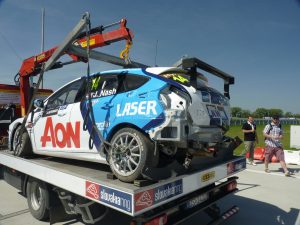
I had better ‘git’ while the ‘gittin’ was good.
I was more than happy to be able to buy eight-dollar (U.S.) gasoline.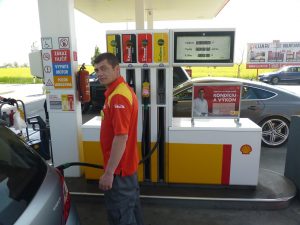
My little Opal didn’t have enough power for one thing.
This is a great idea.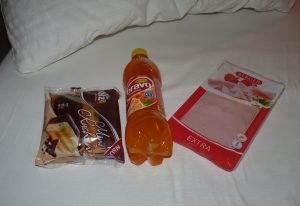
It was time to begin the ‘longest day’.
It was a nice relaxing ride home.
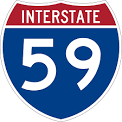
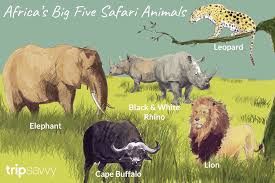
2. Roland Vanden Eynde, Vilvoorde, Belgium – 50
3. Carol Lewis, San Clemente, California USA – 28
4. Will White, Quakertown, Pennsylvania USA – 25
5. Chris Economaki, Charlotte, North Carolina USA – 20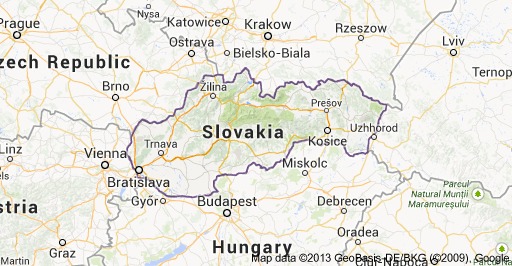
2012
